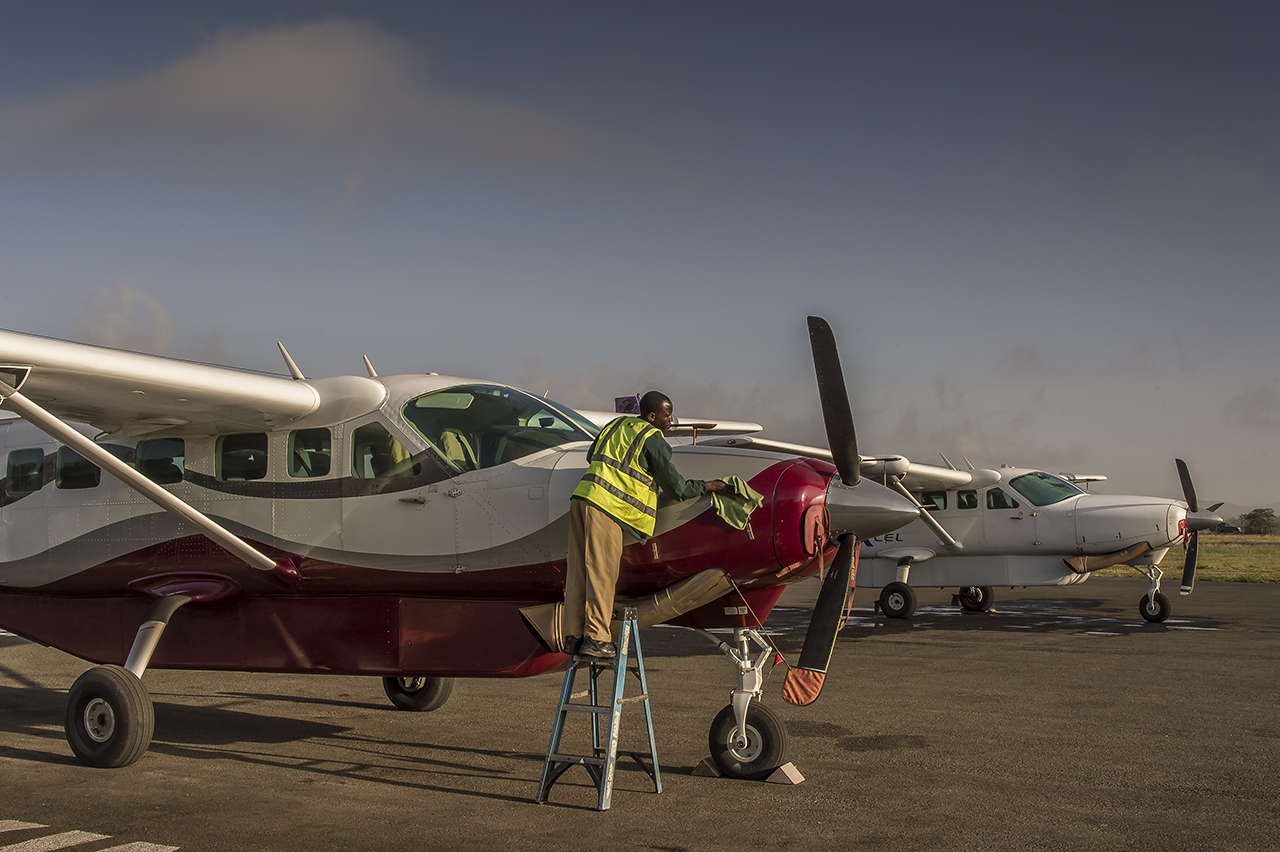
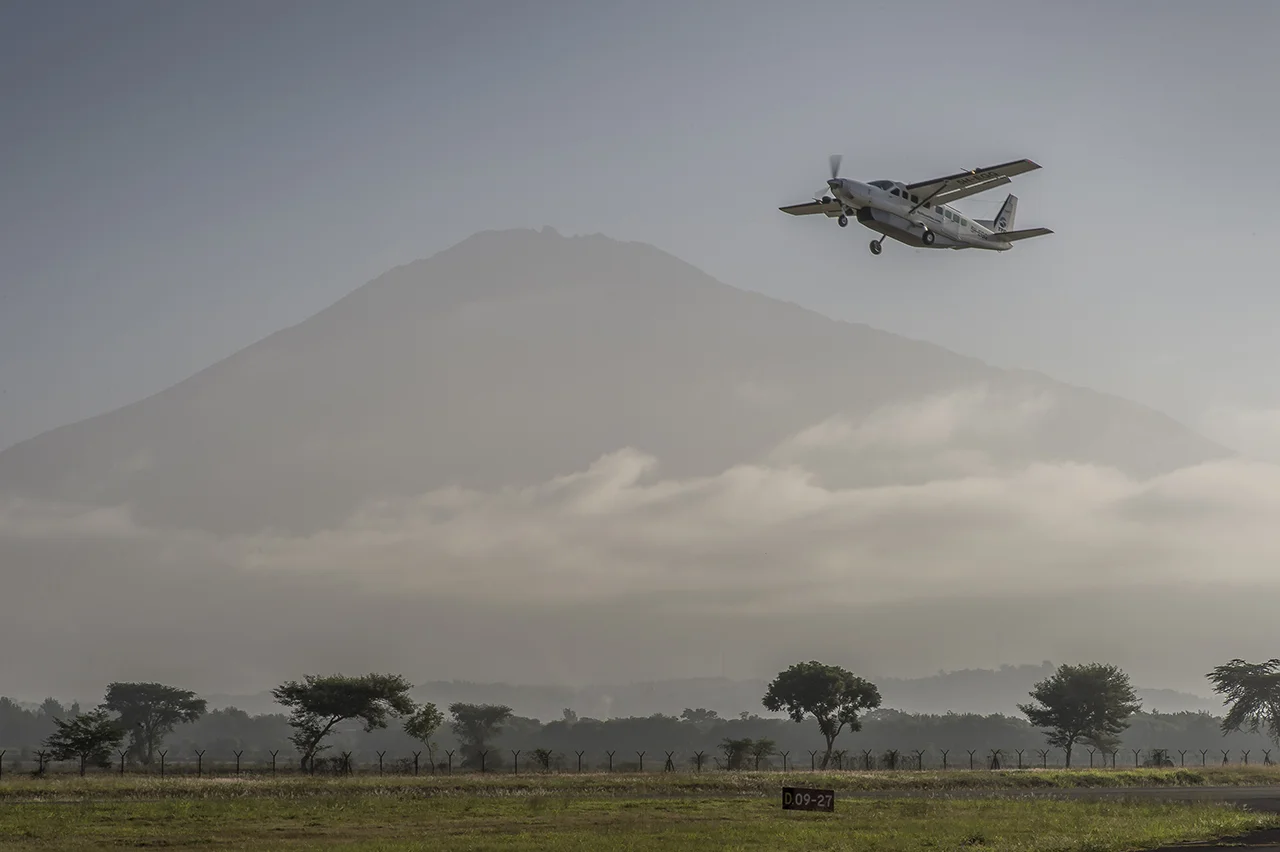
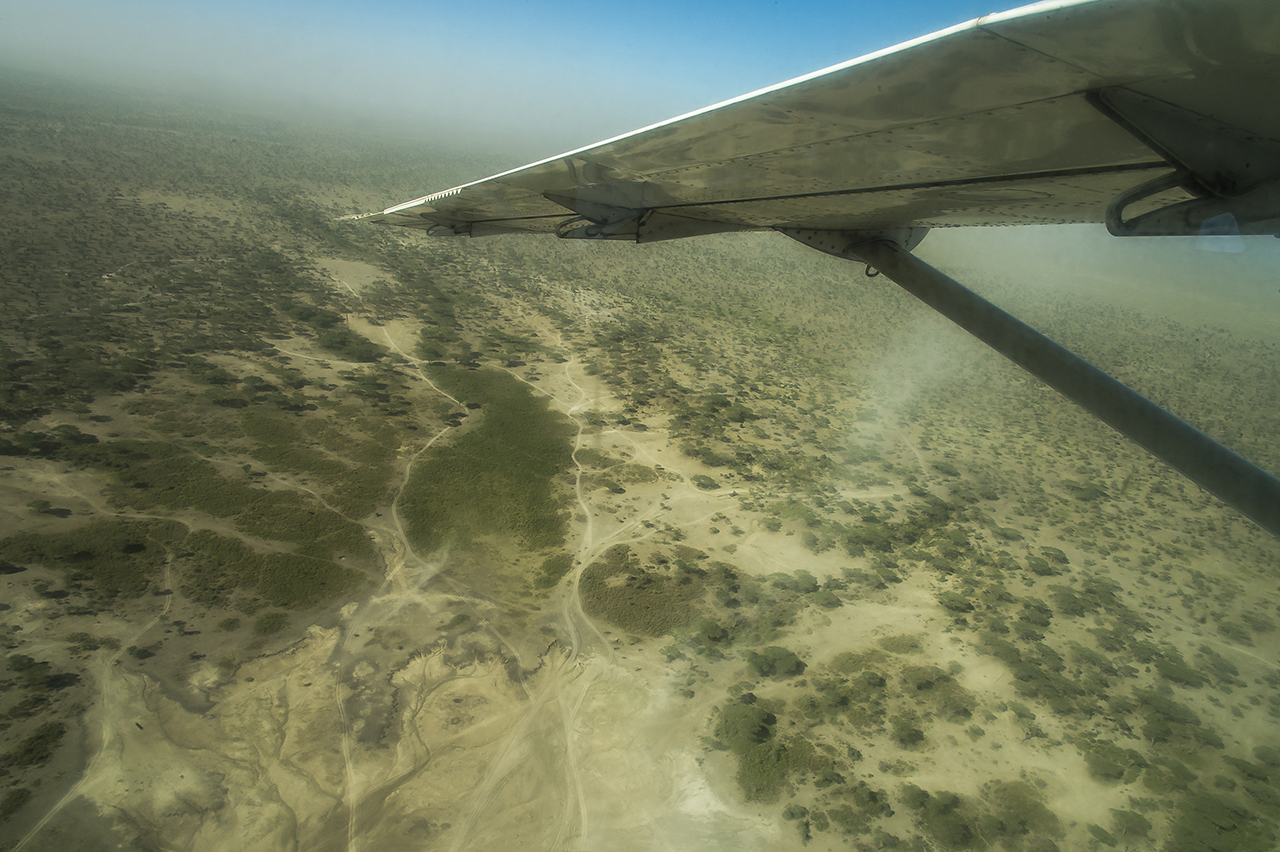
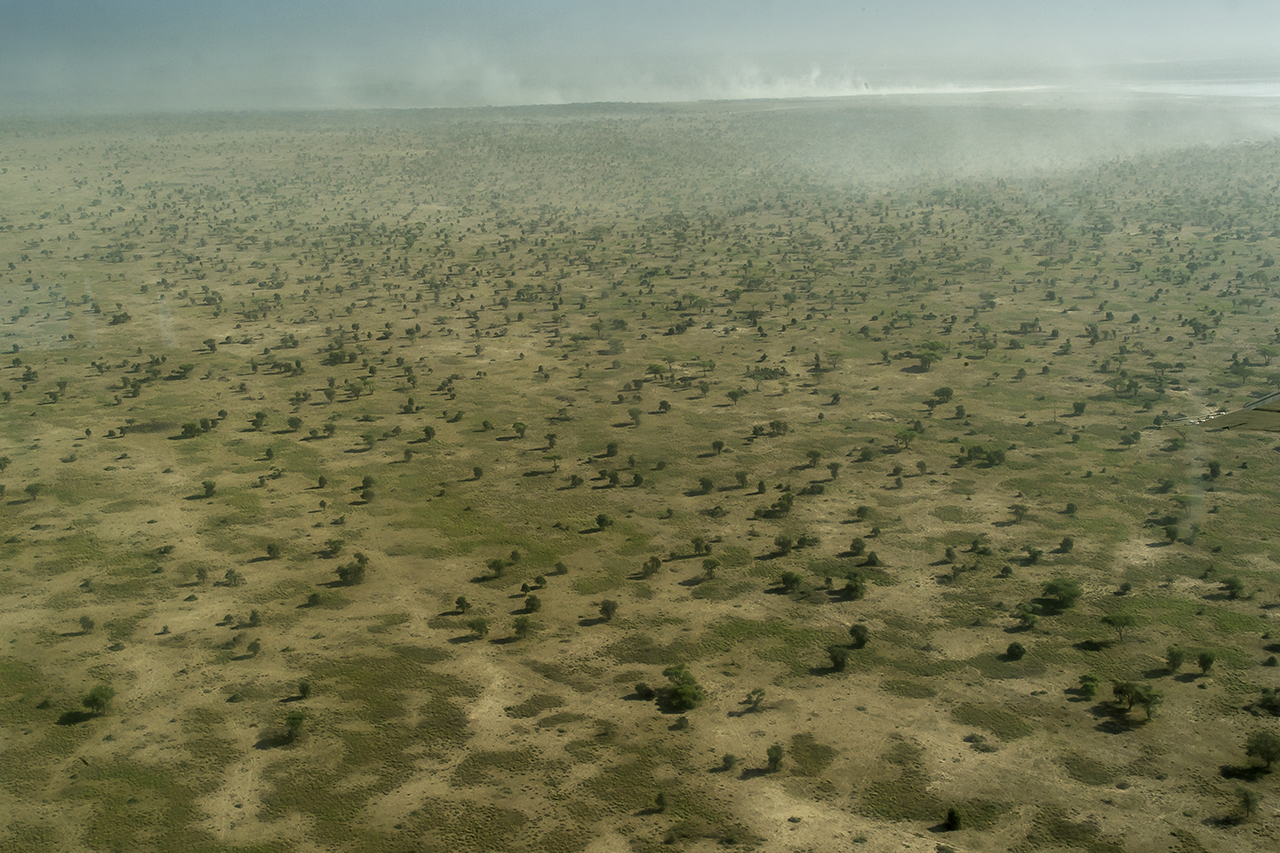
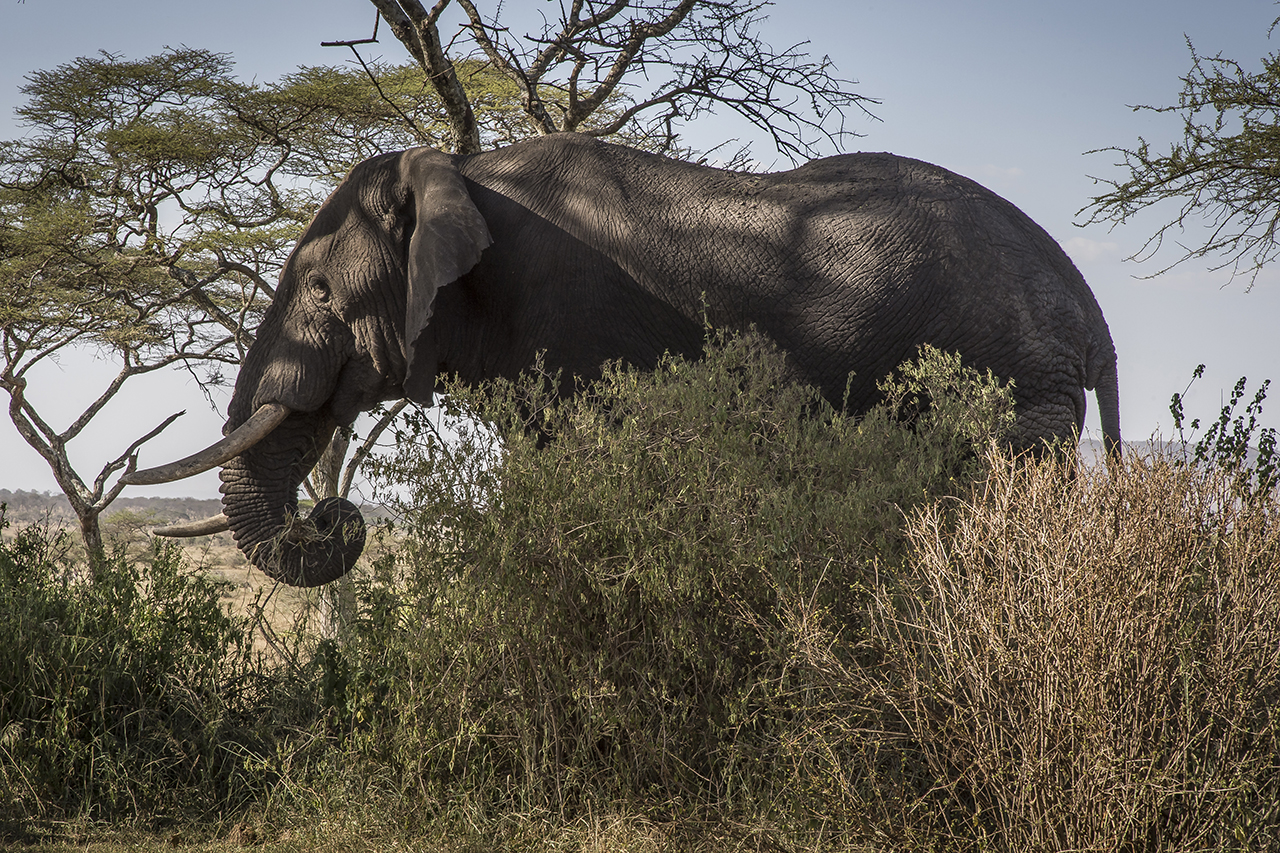

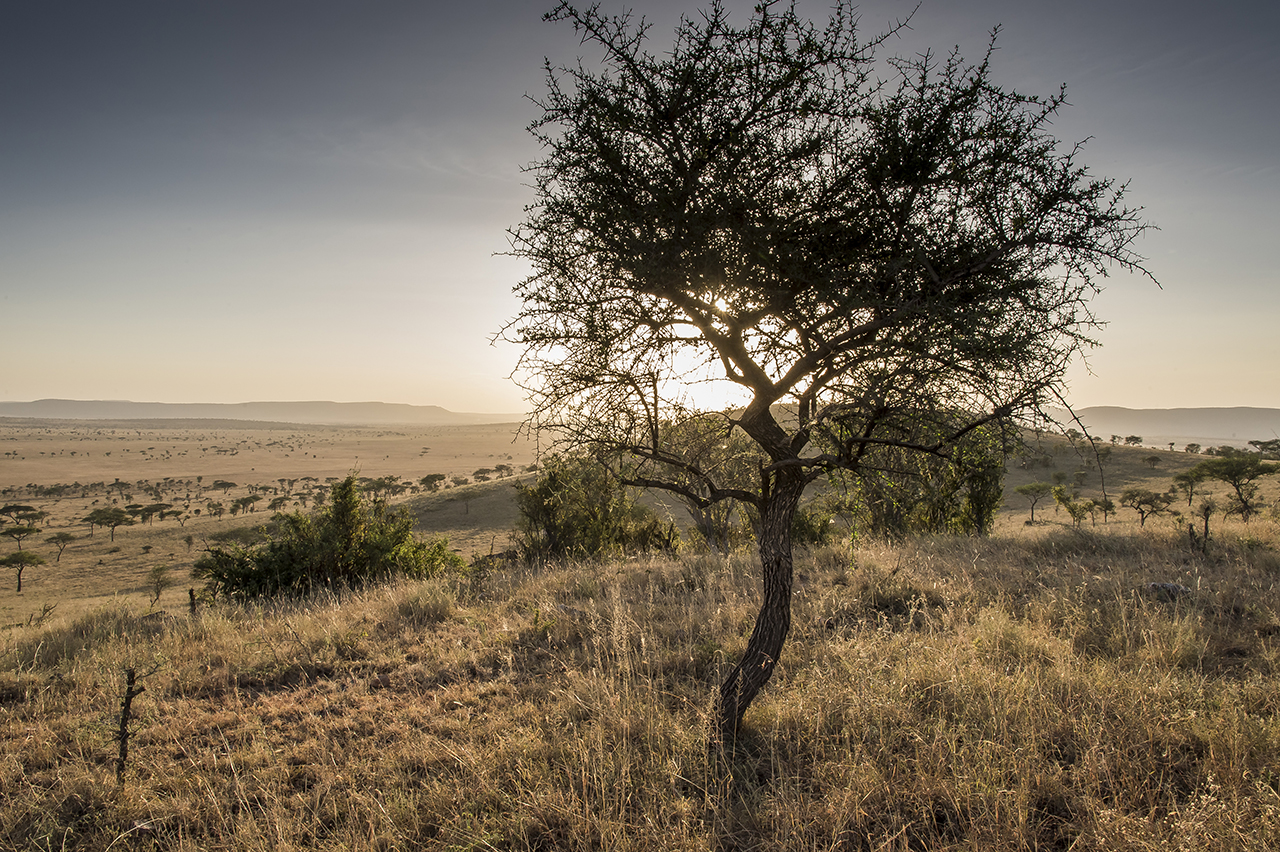
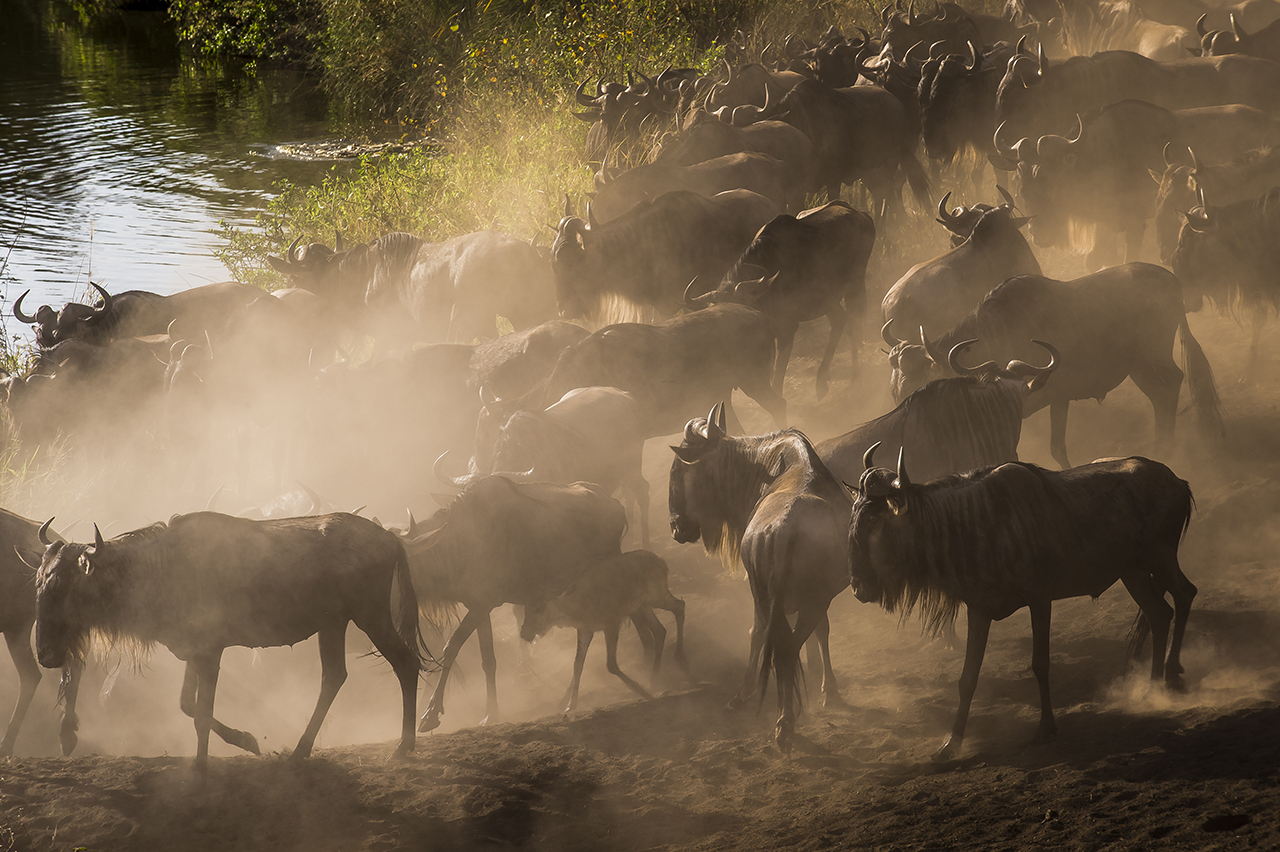
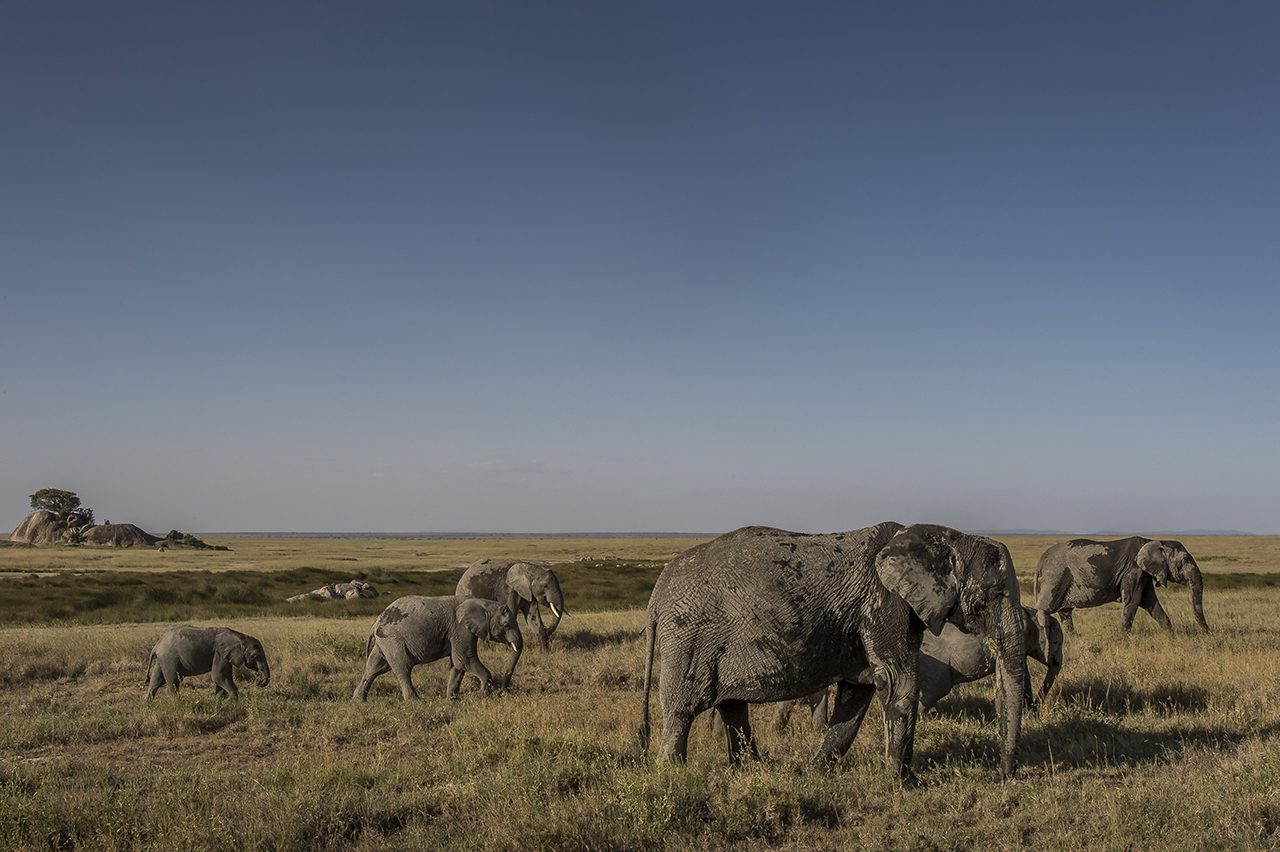
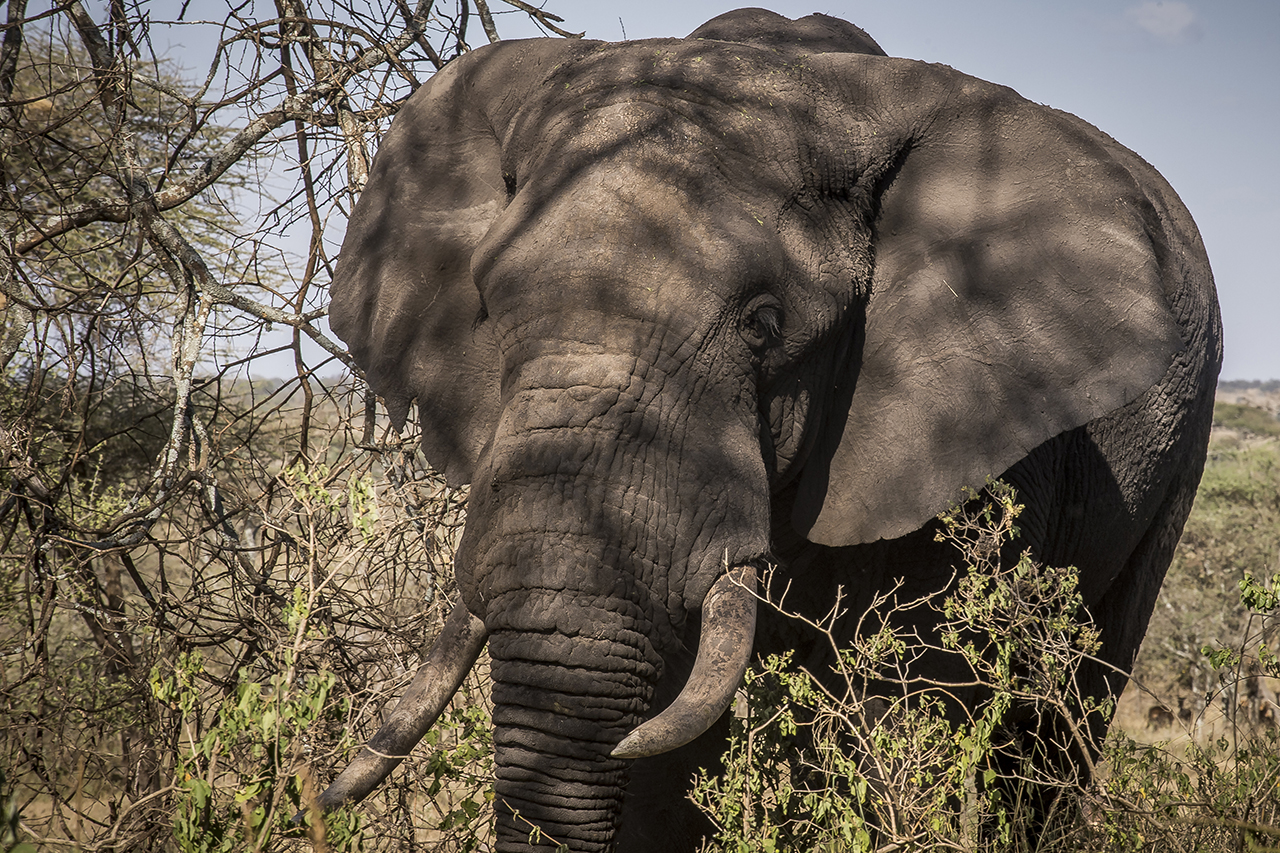
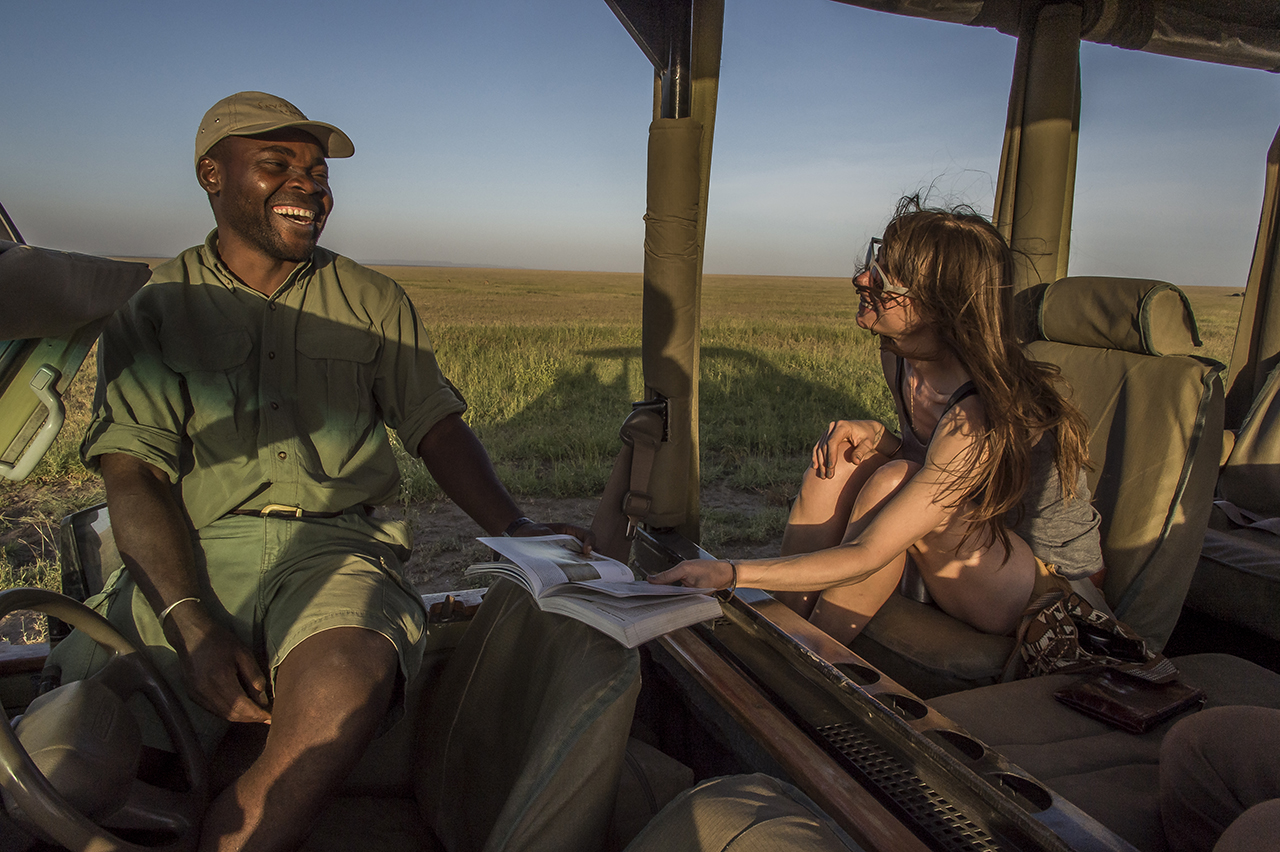
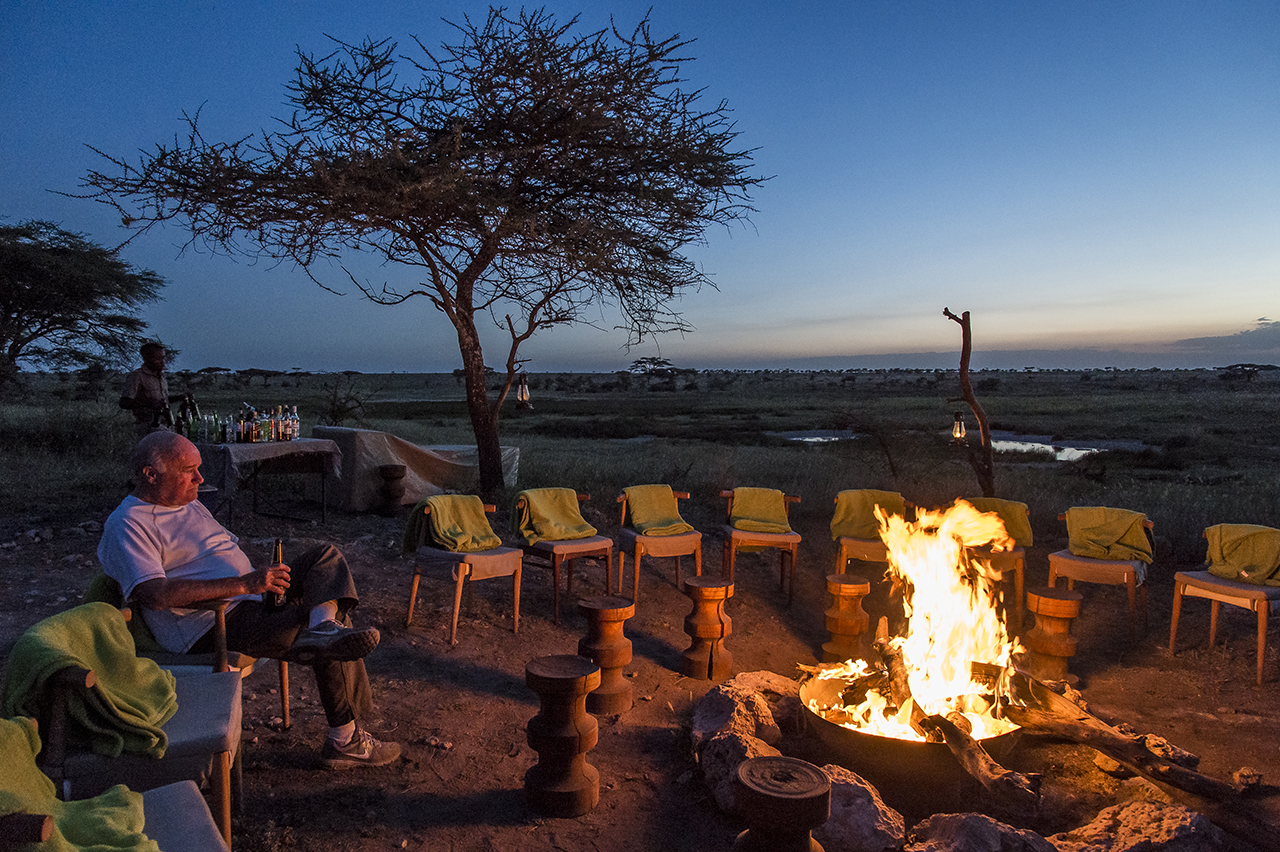
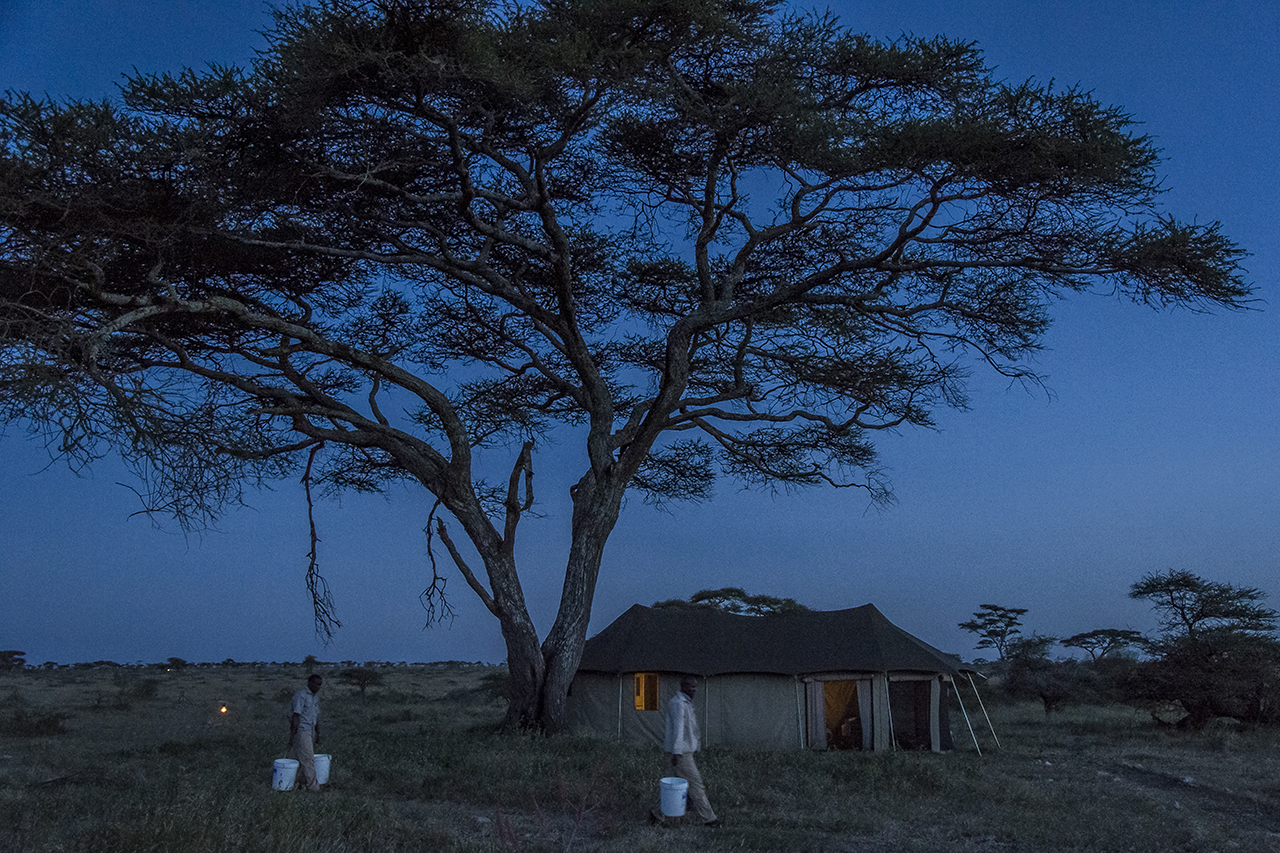
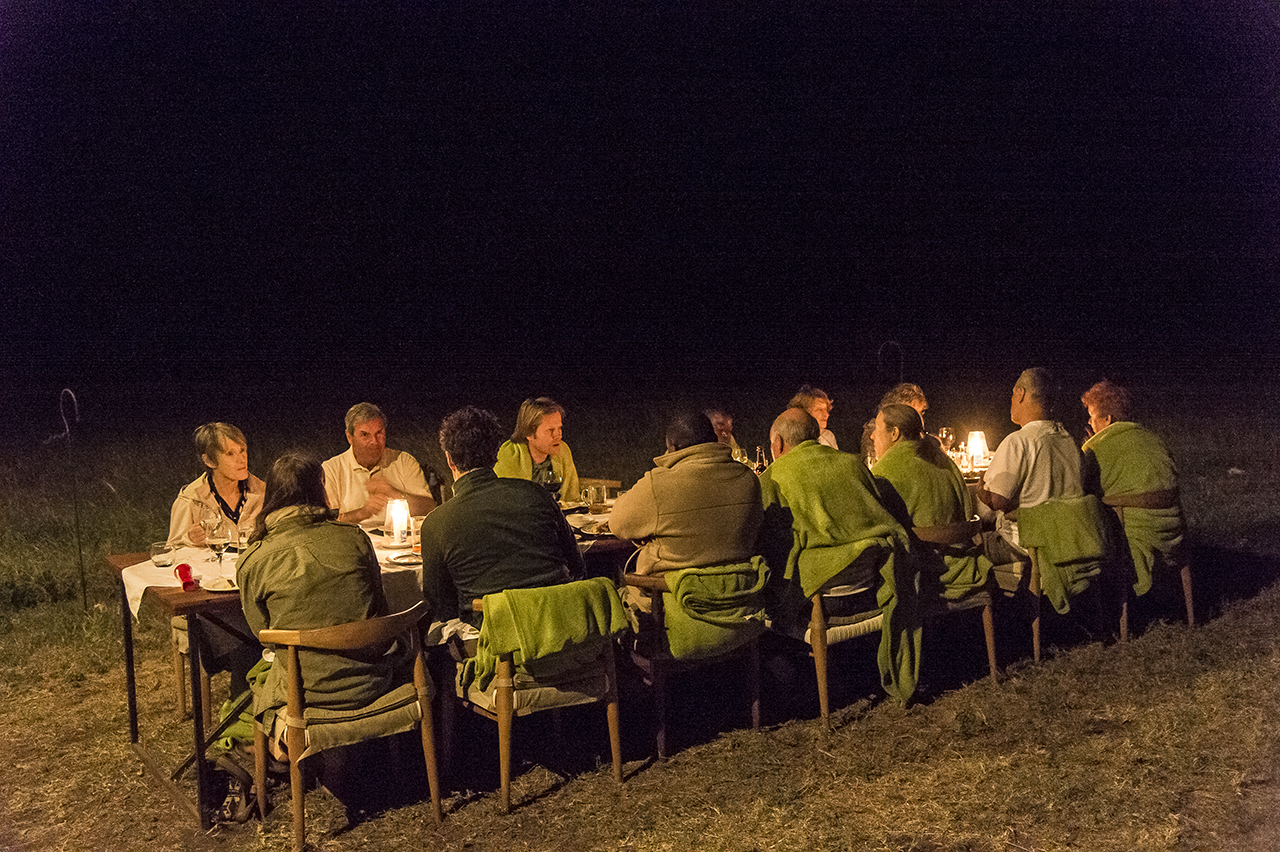
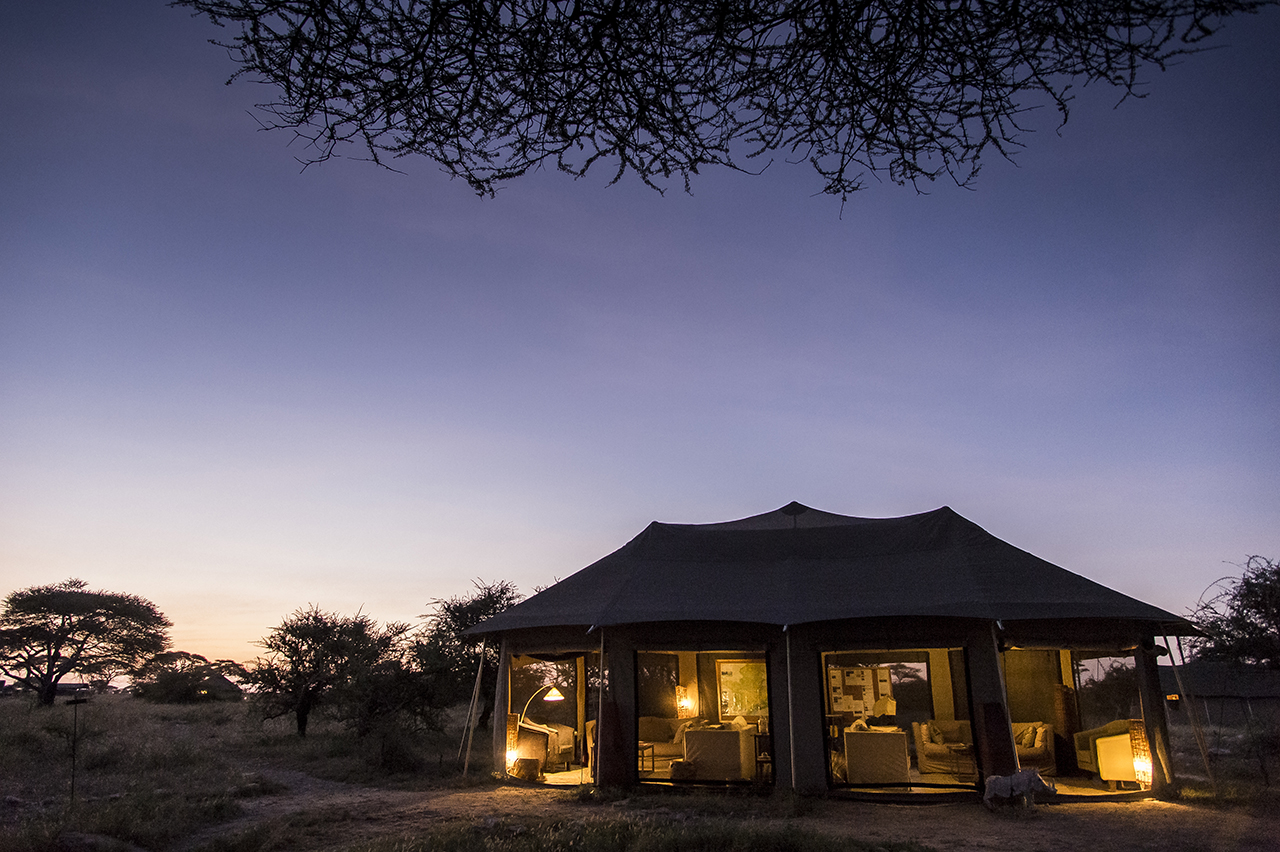
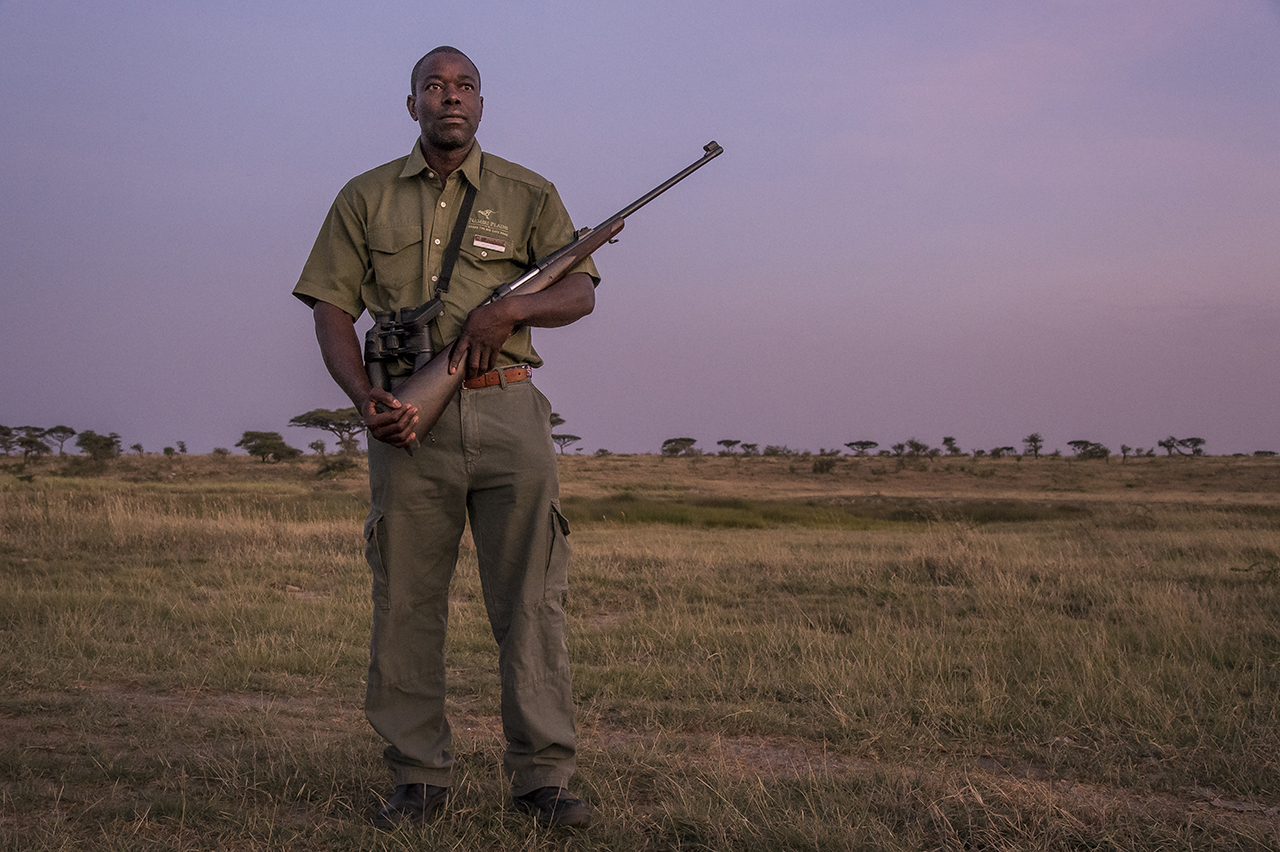
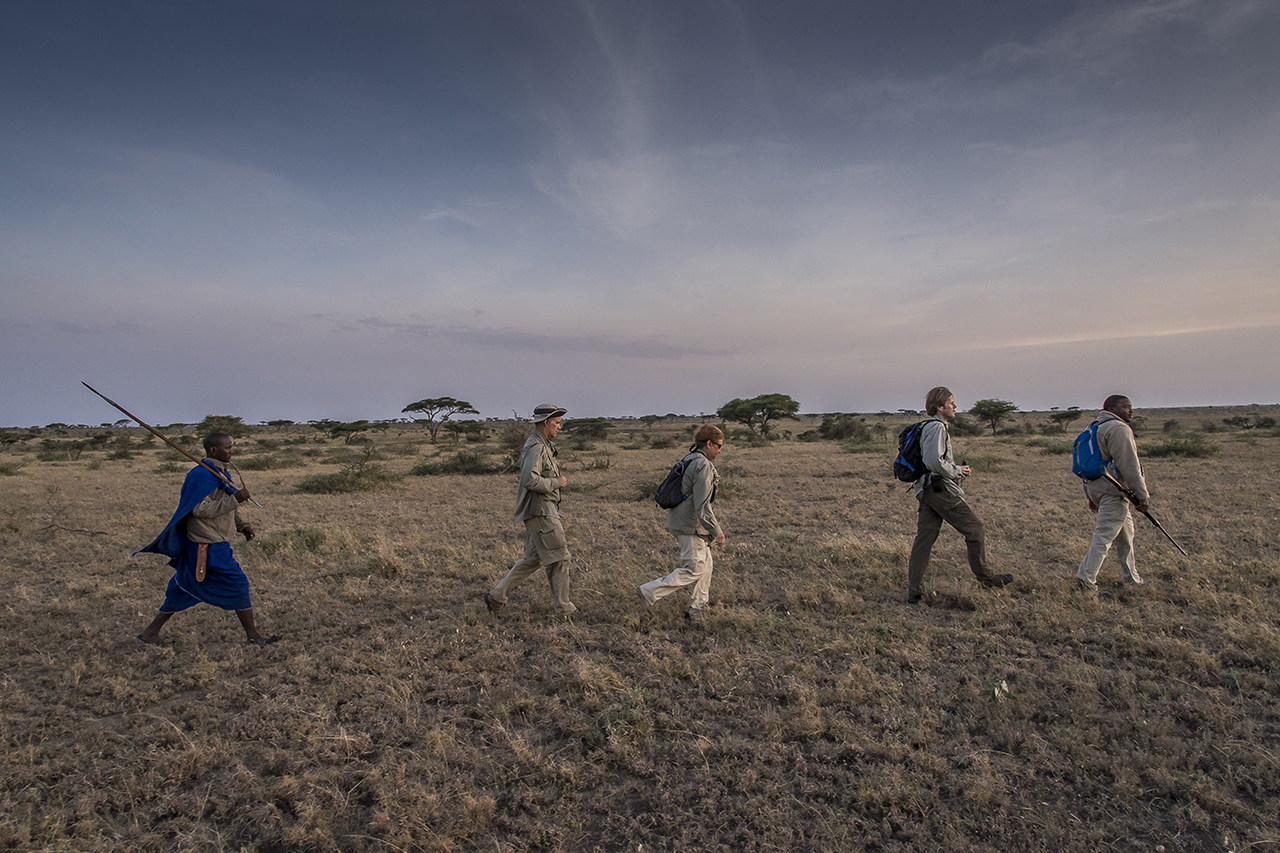
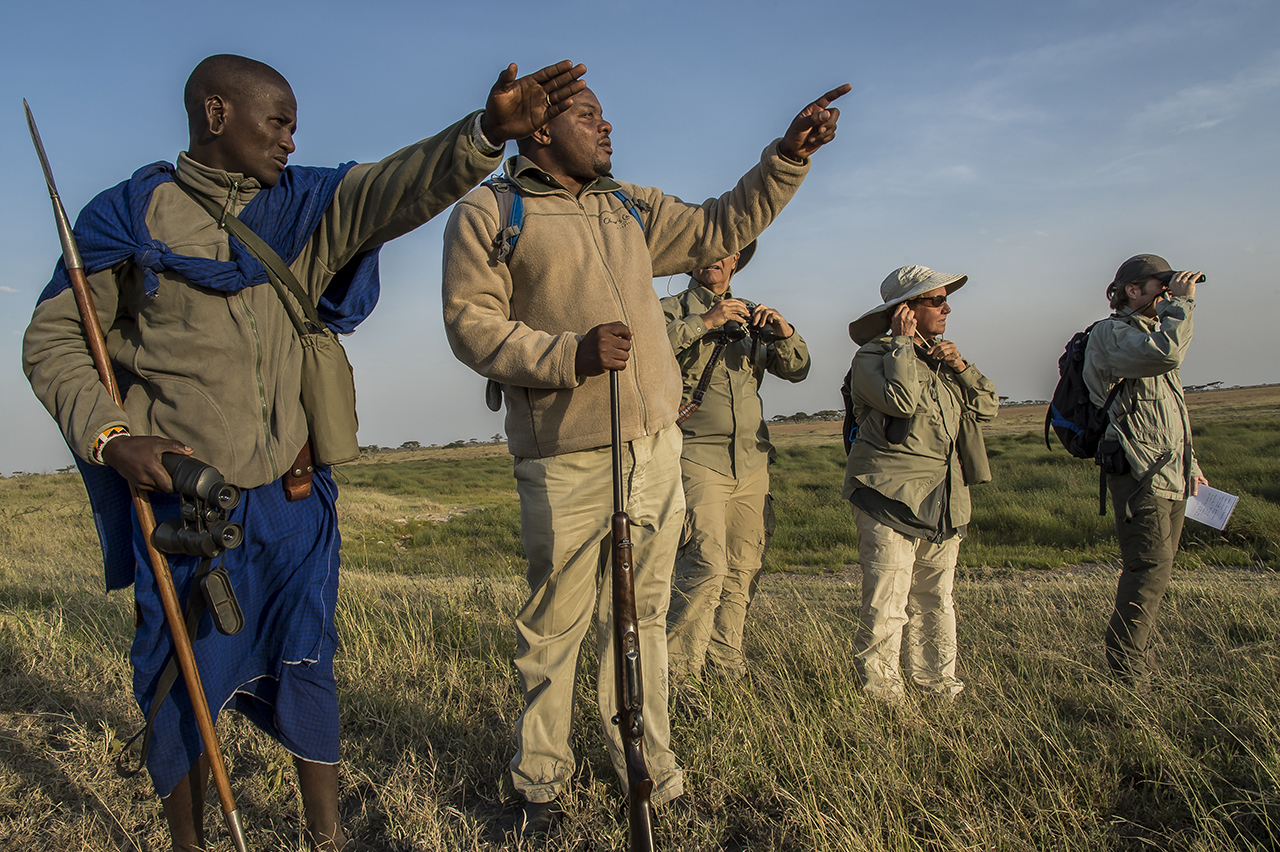
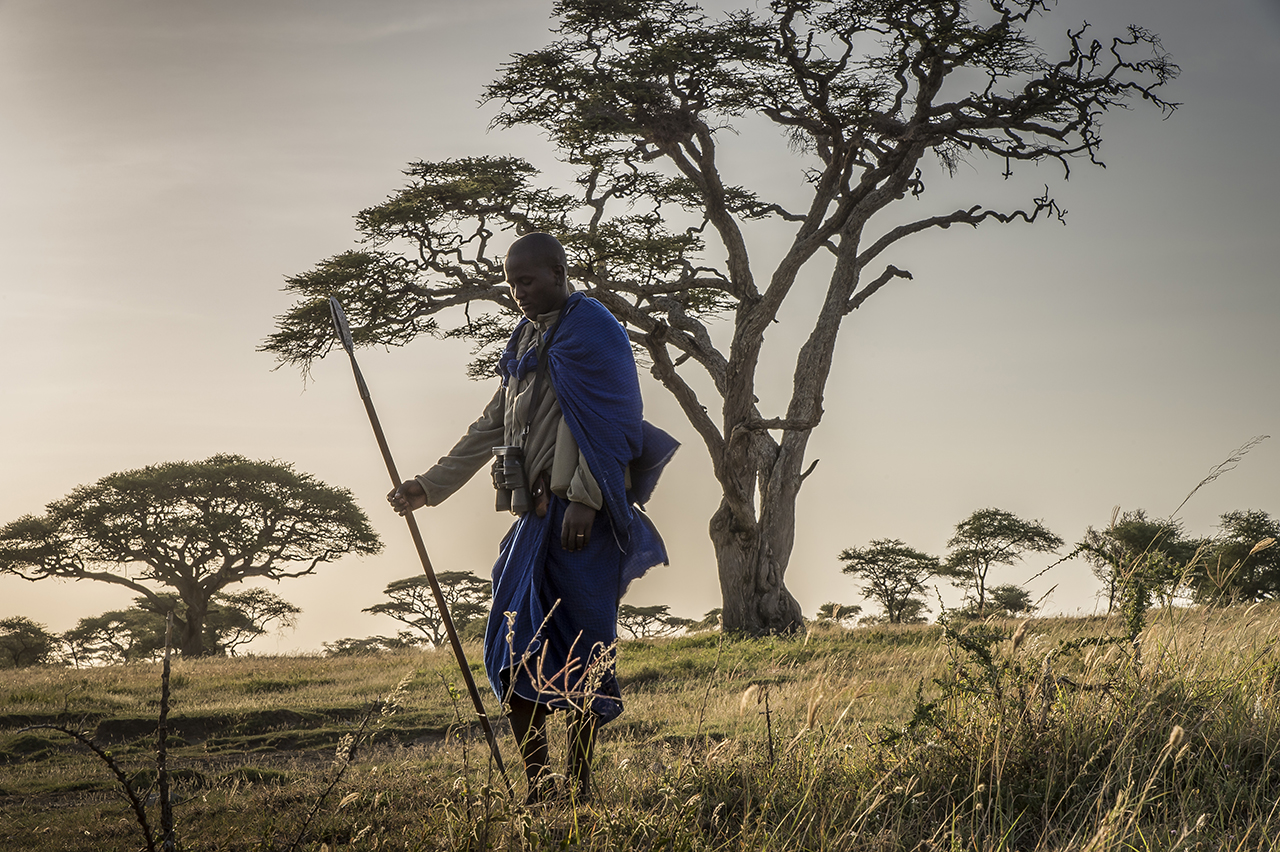
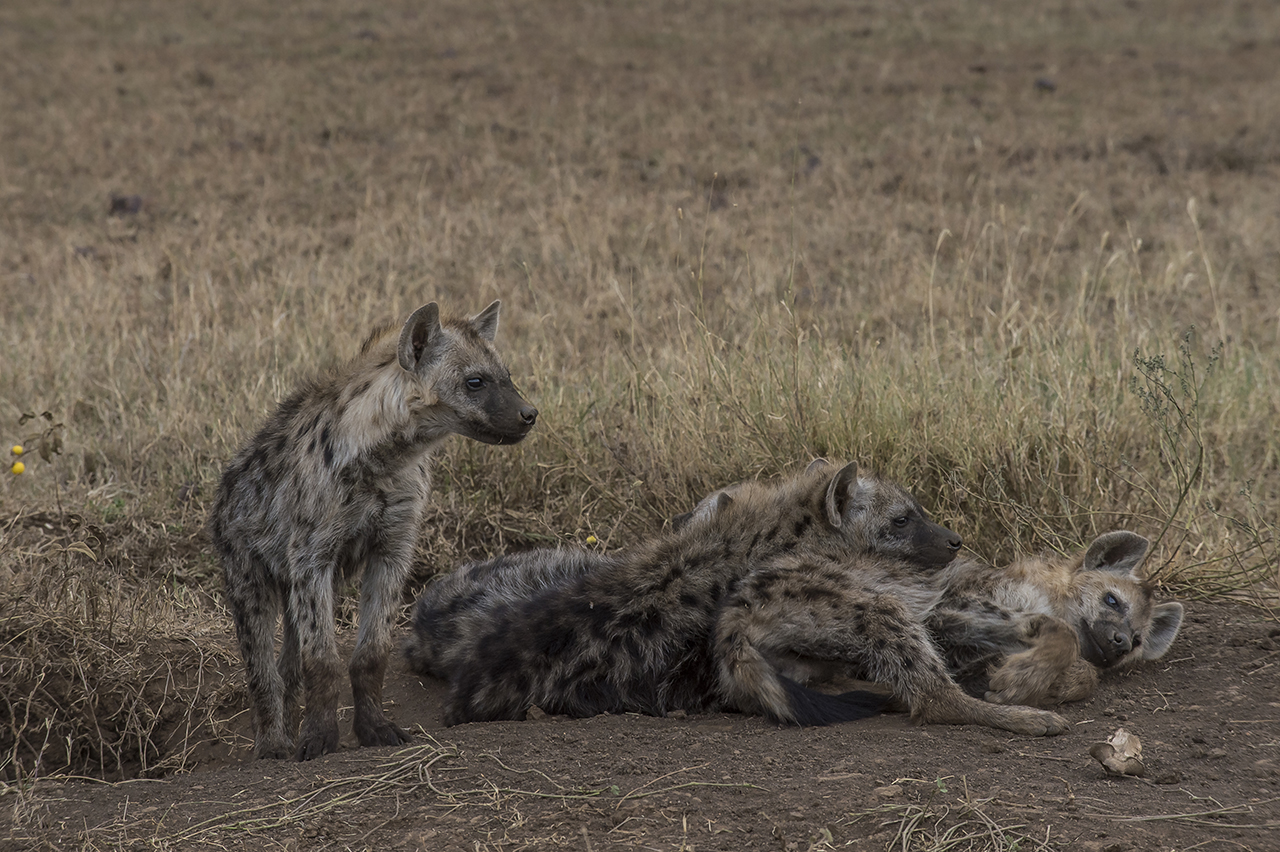
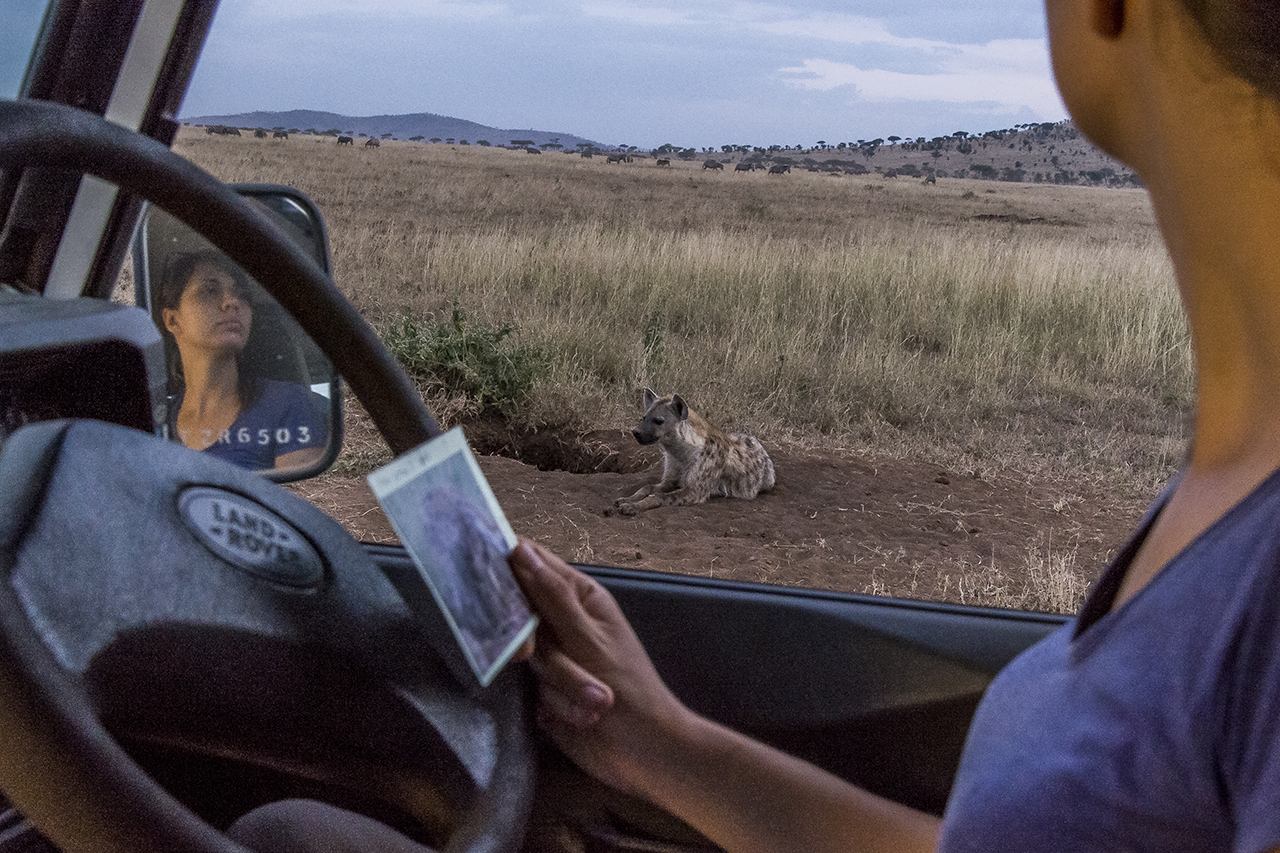
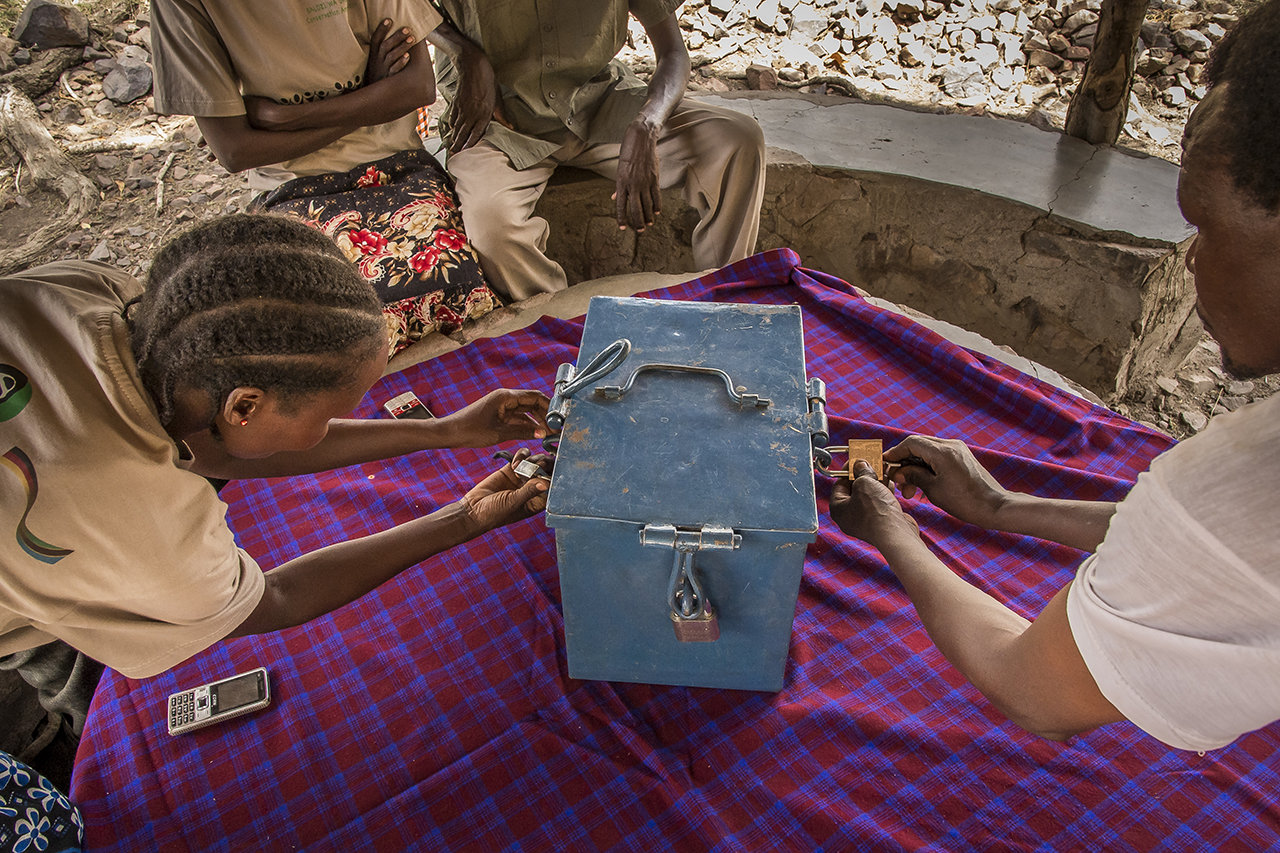
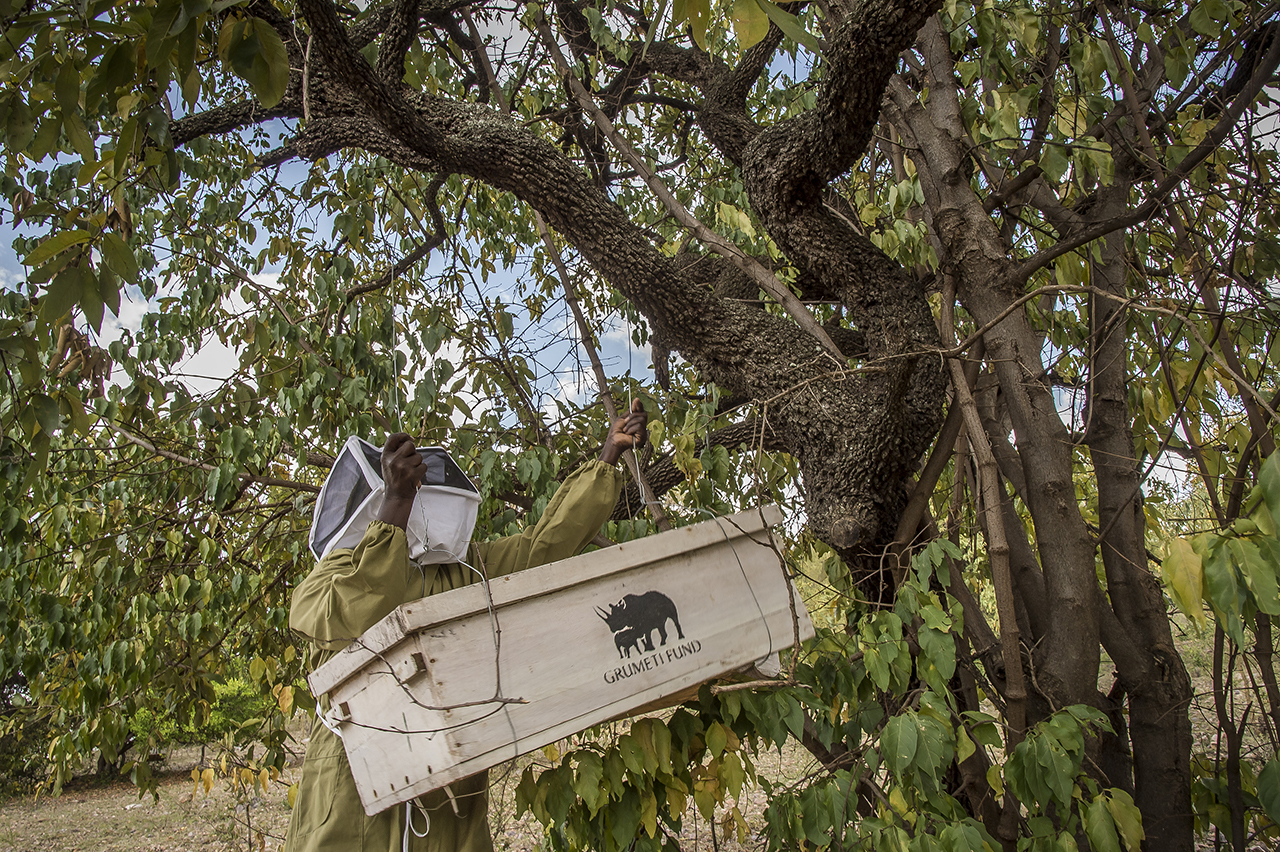
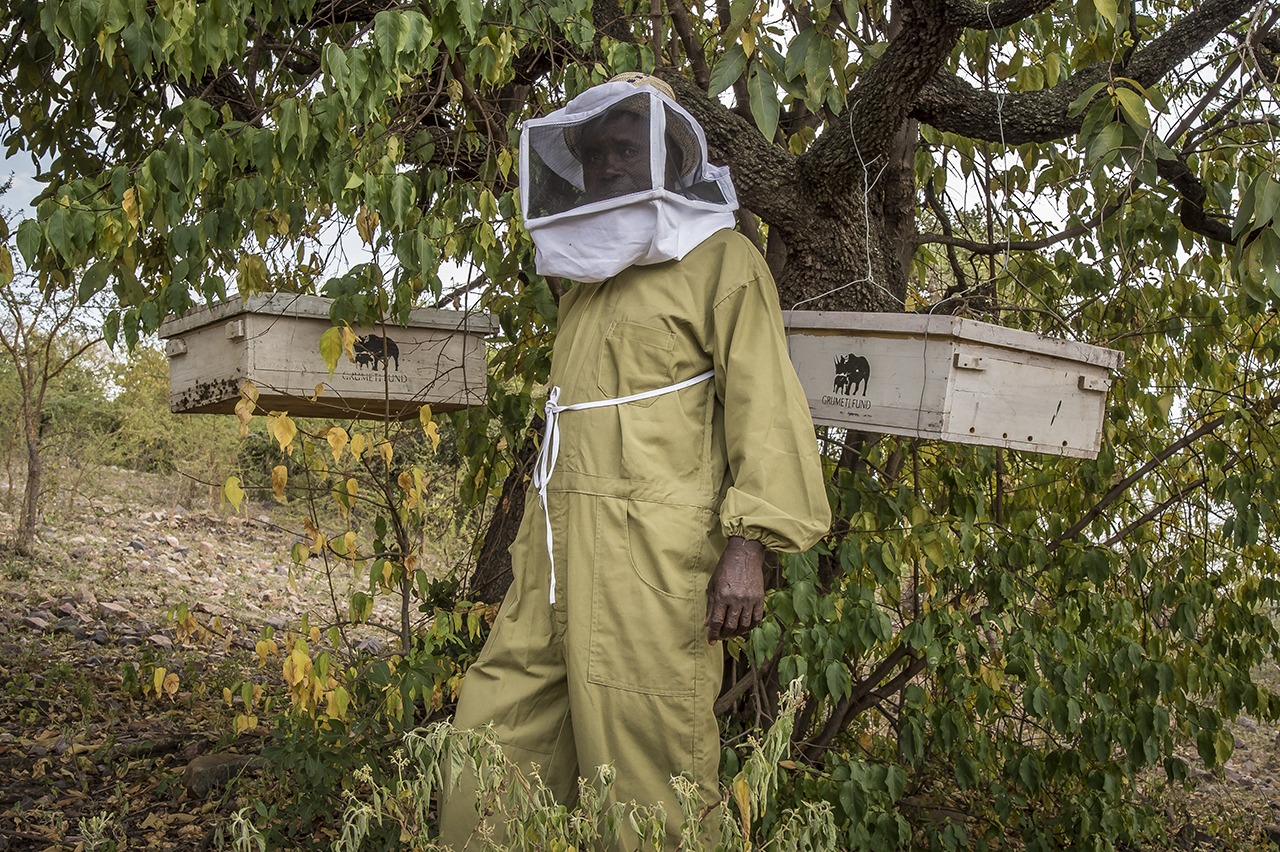
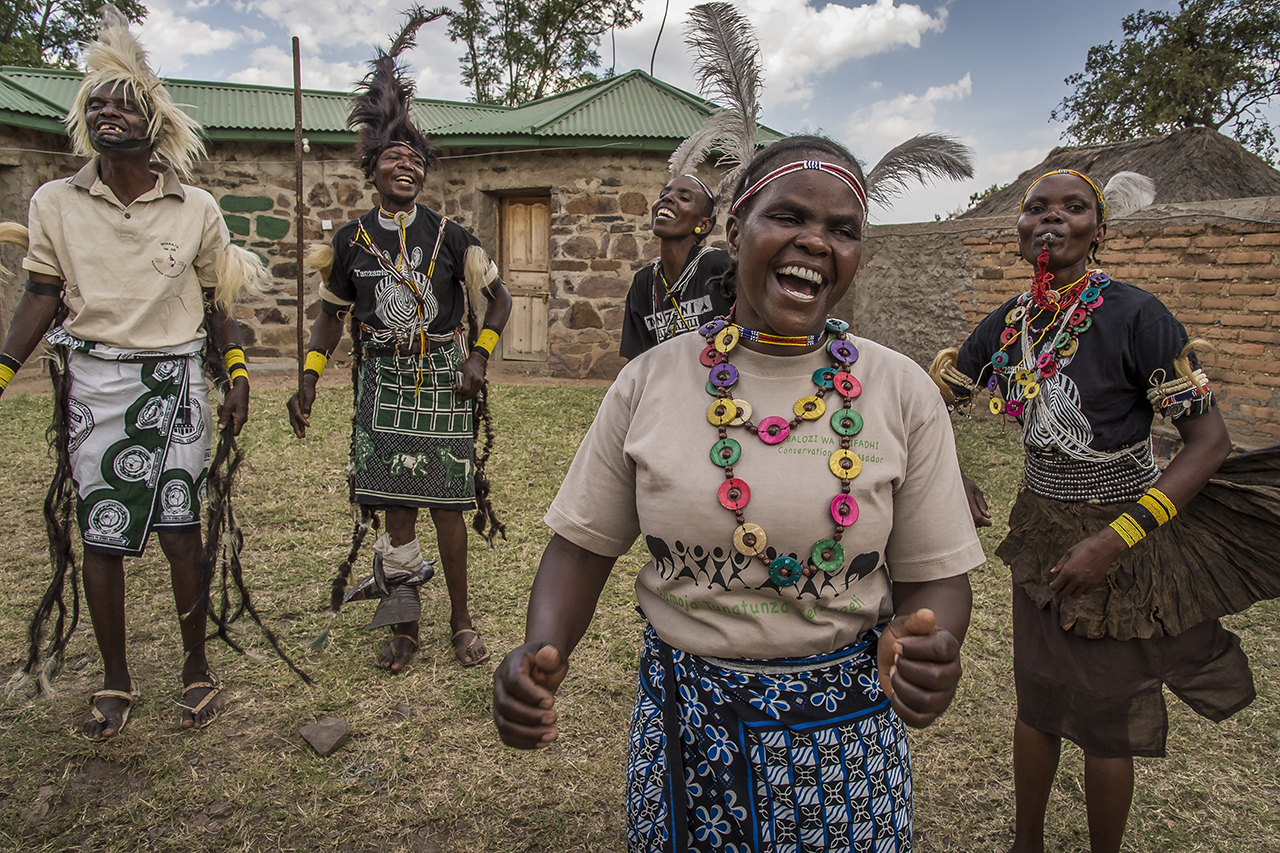
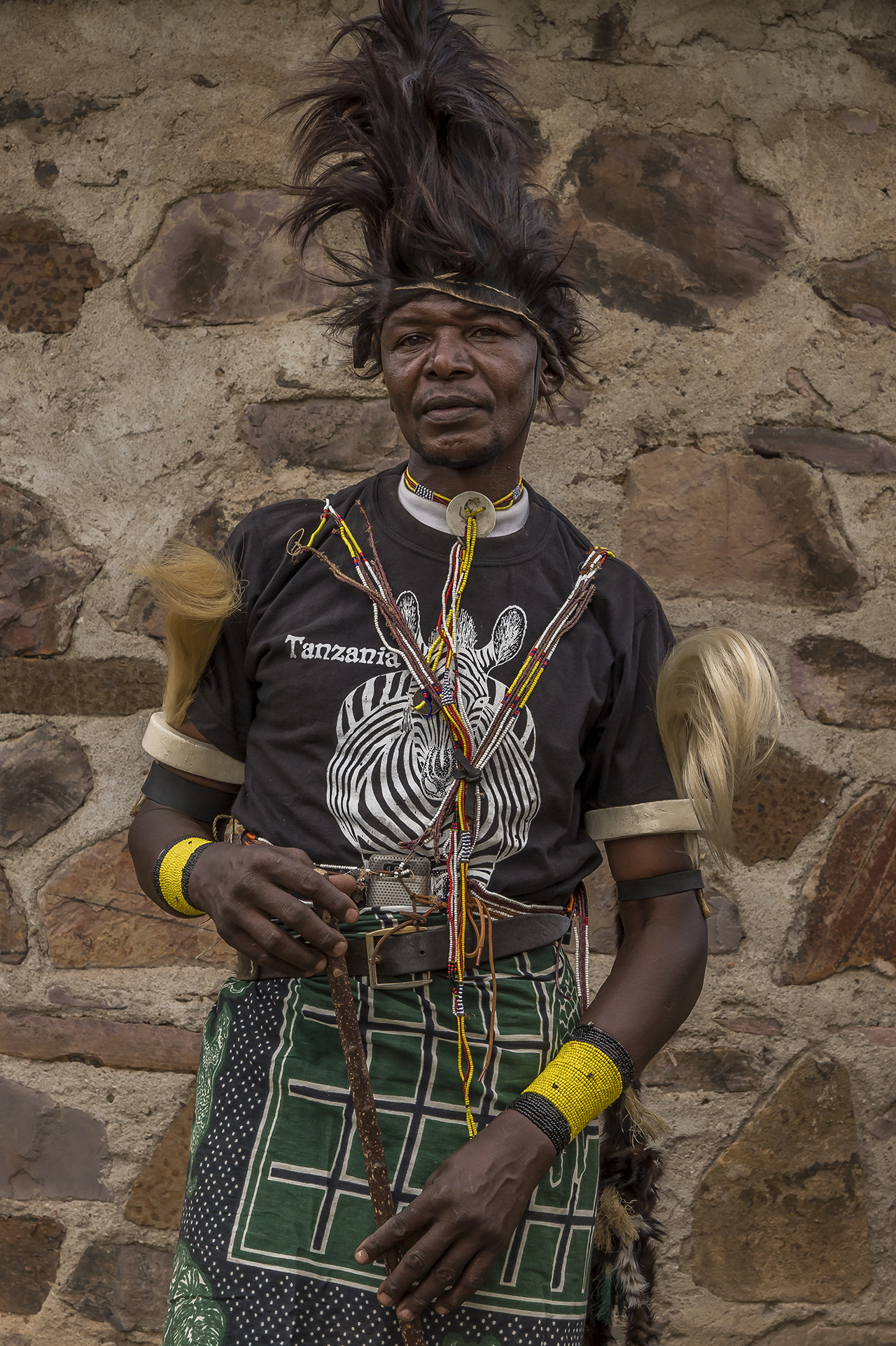
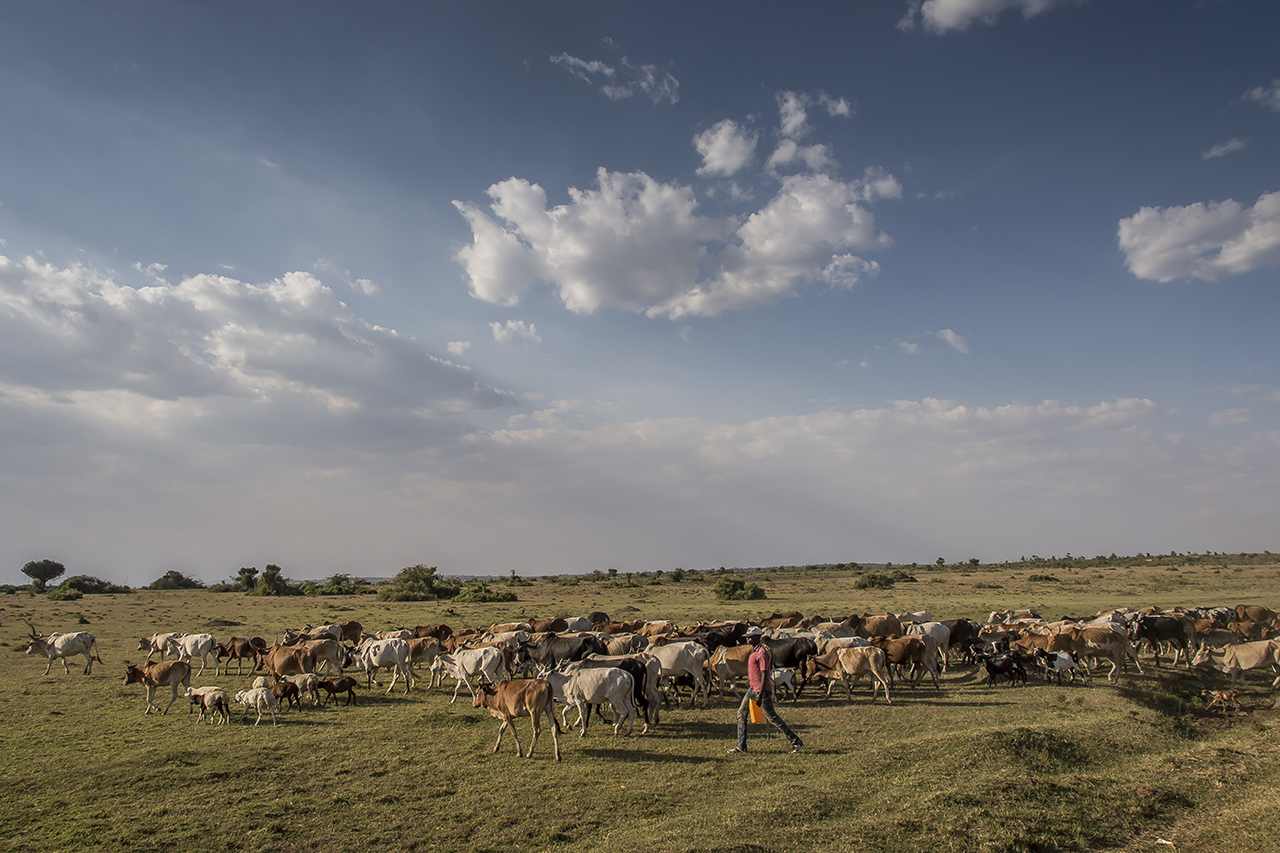
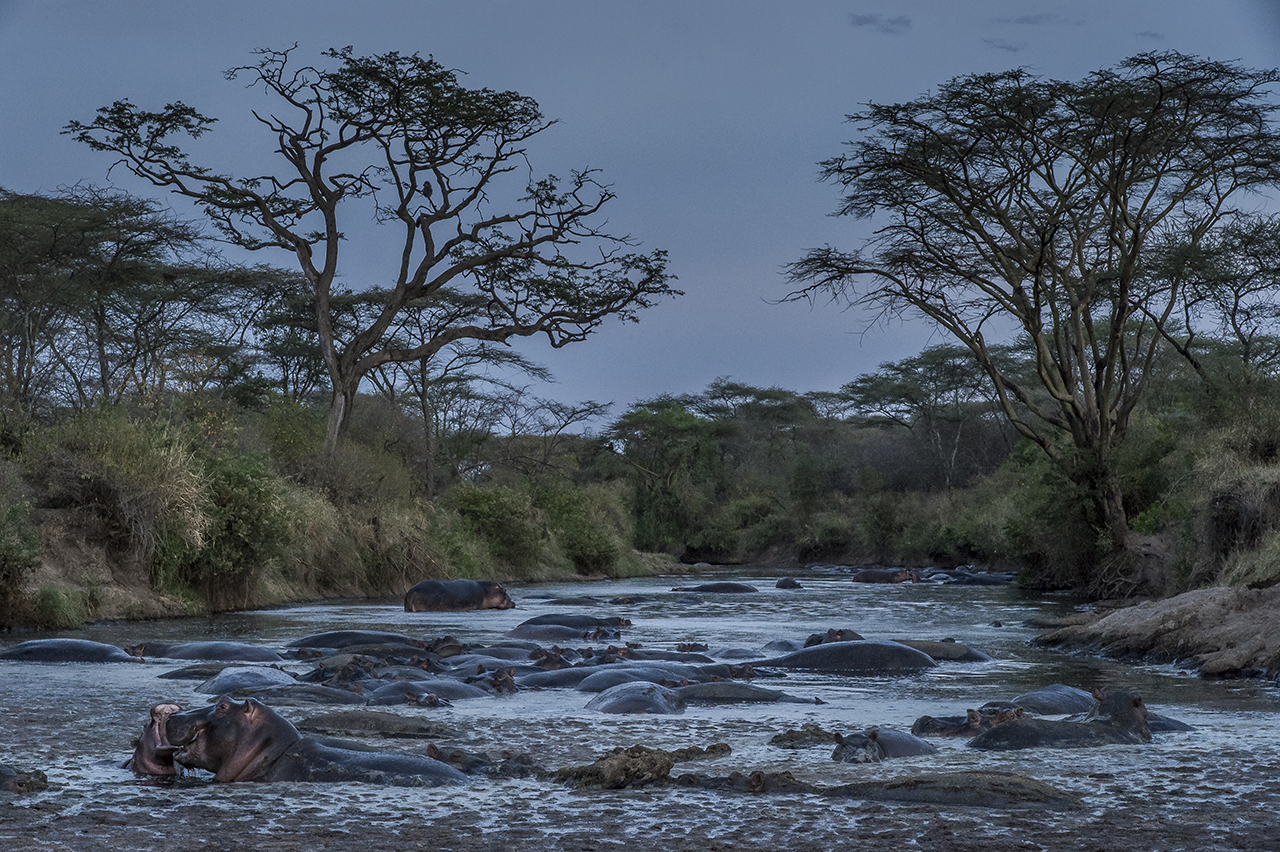
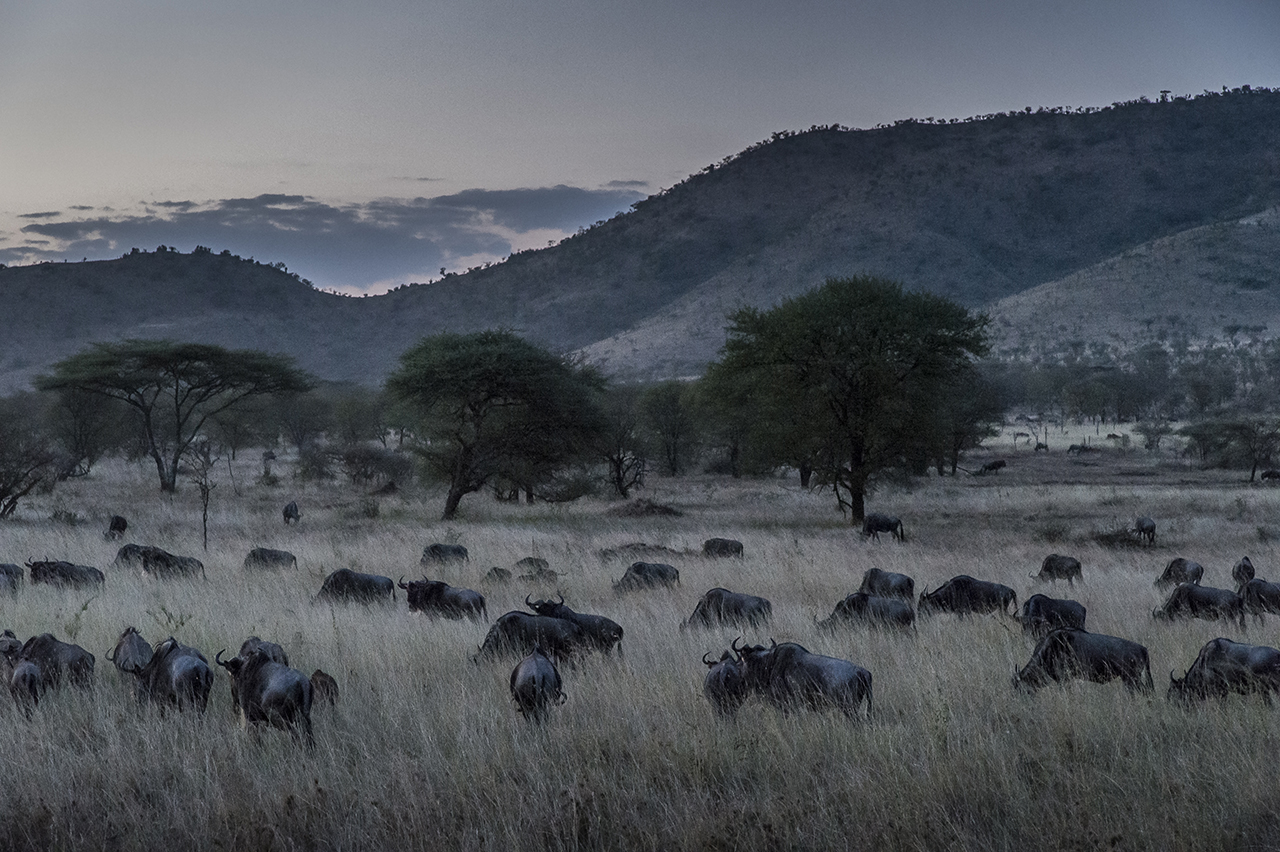
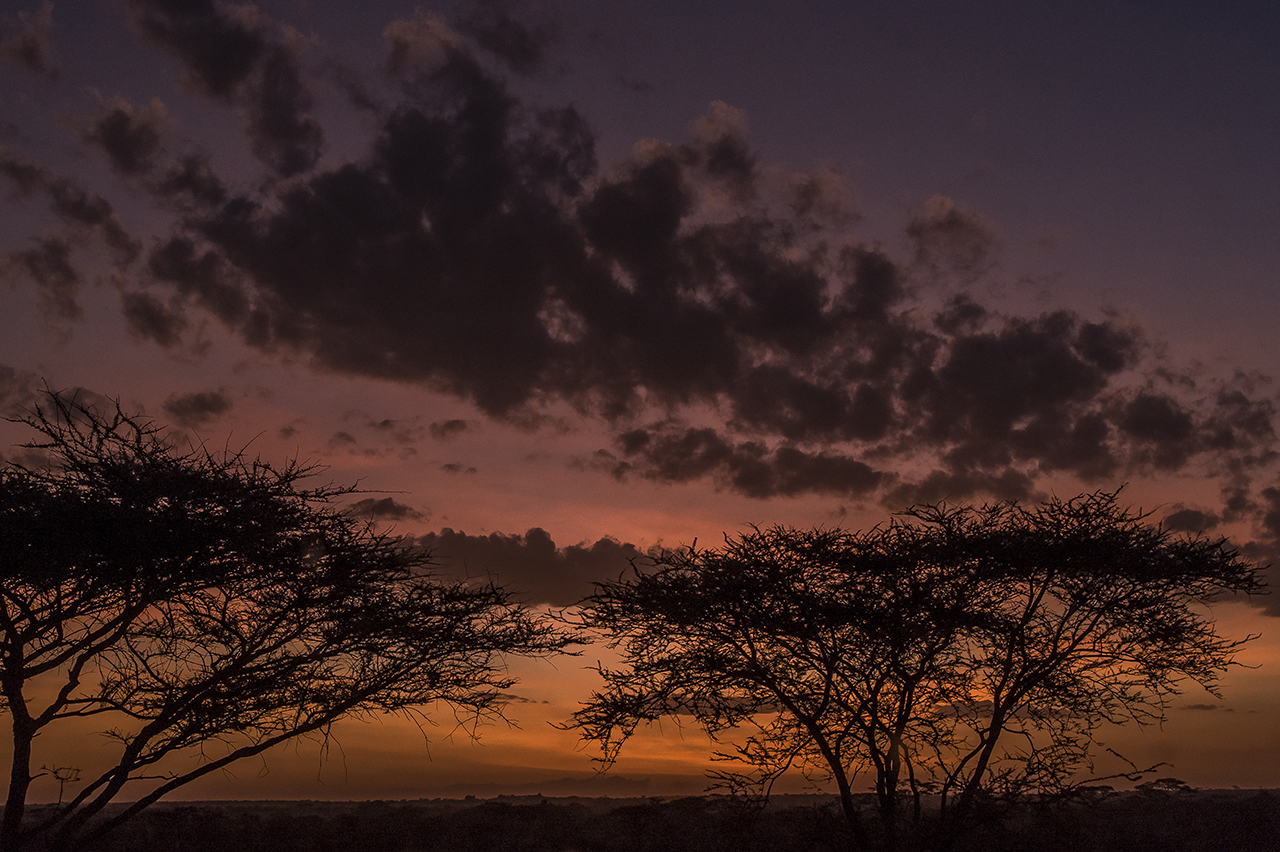
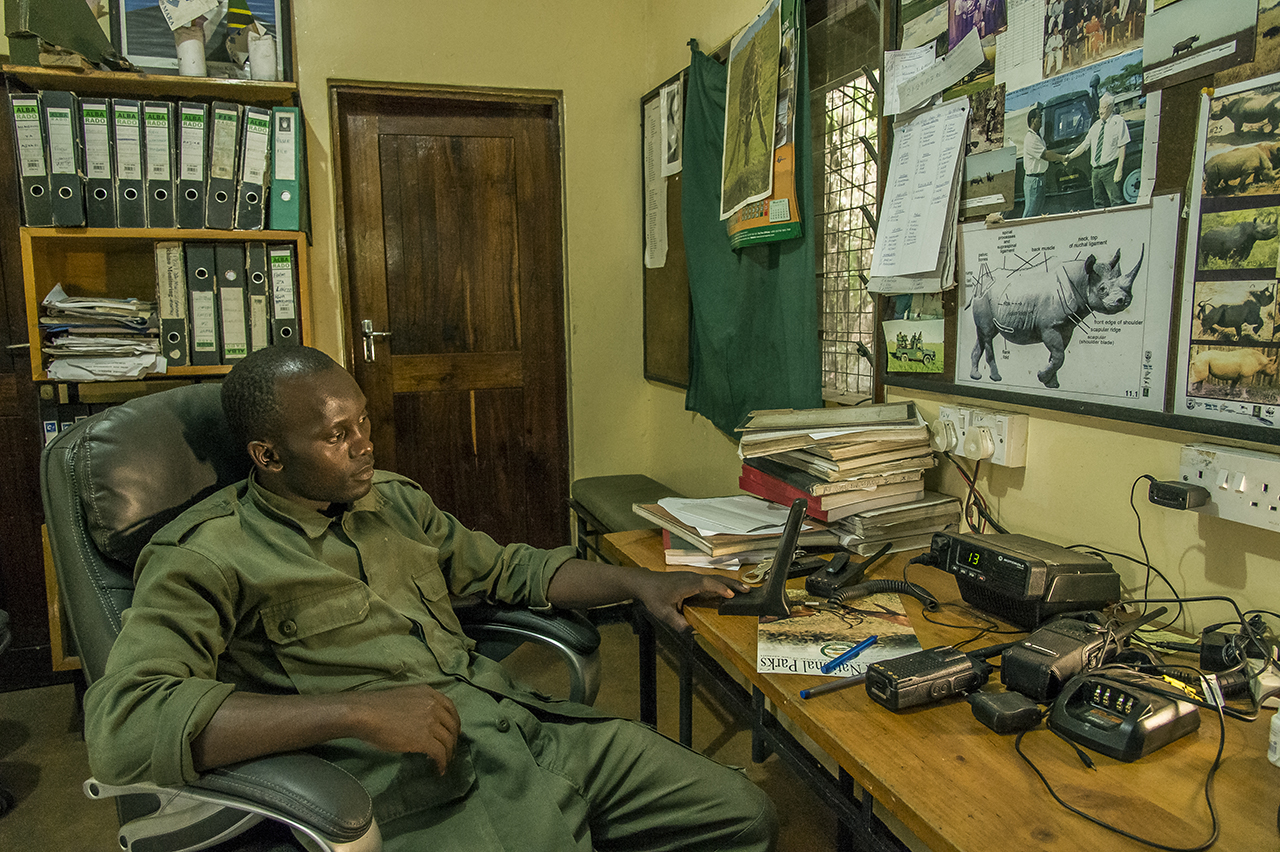
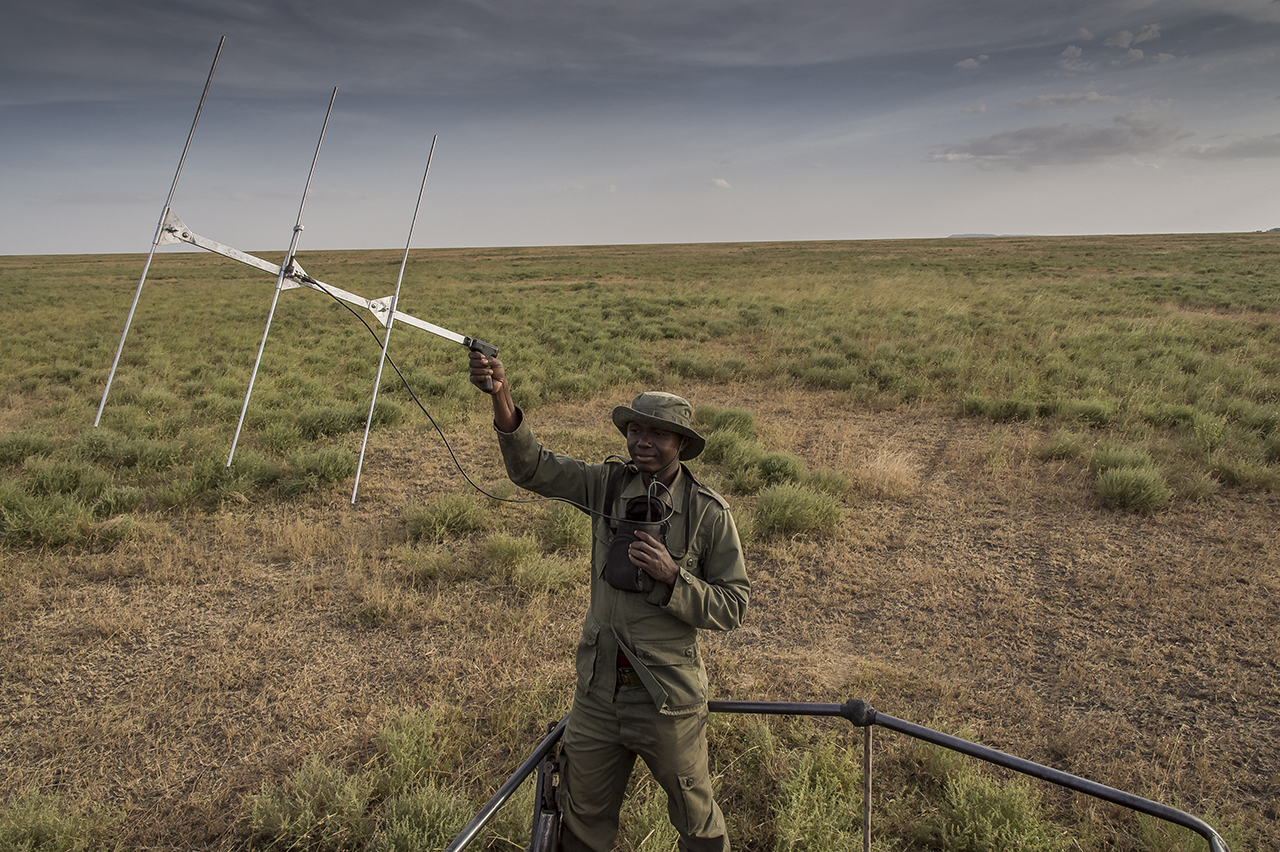
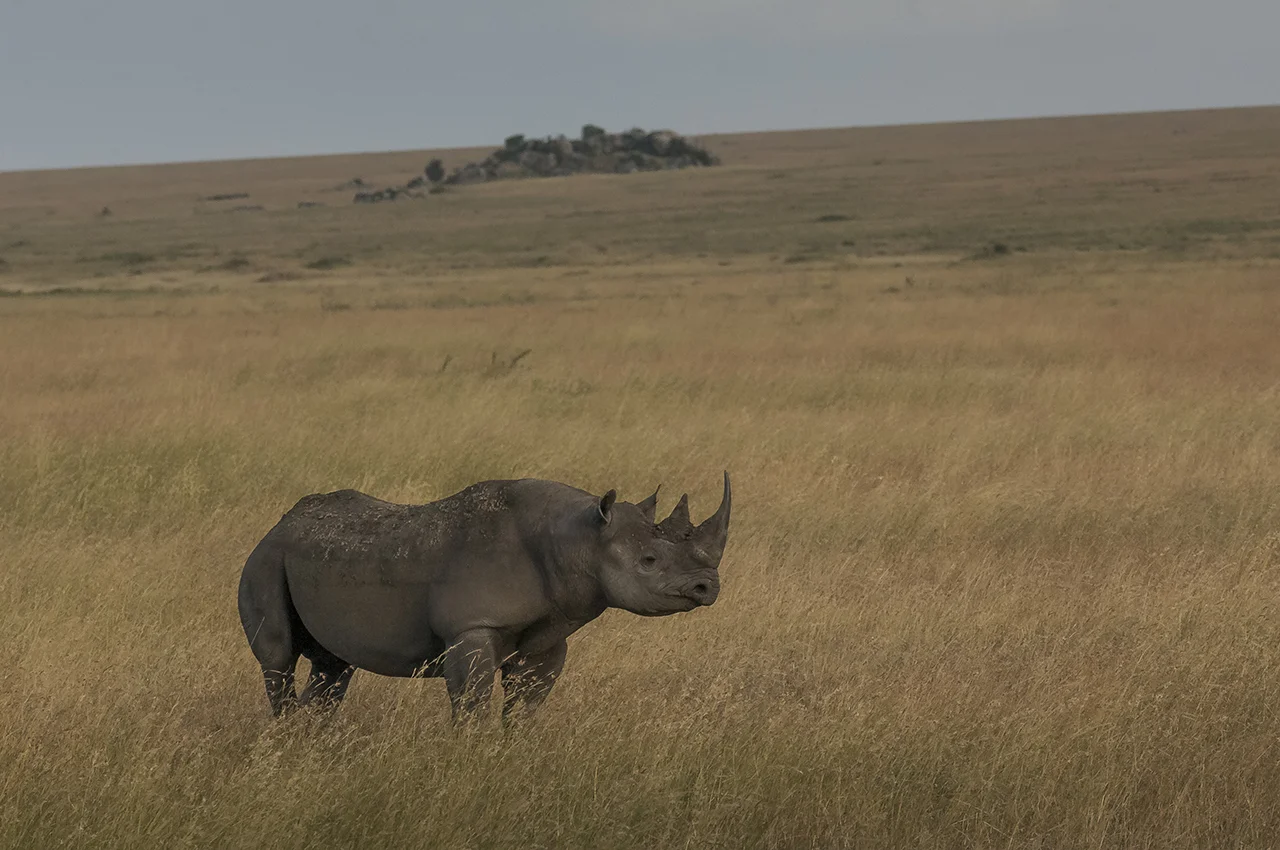
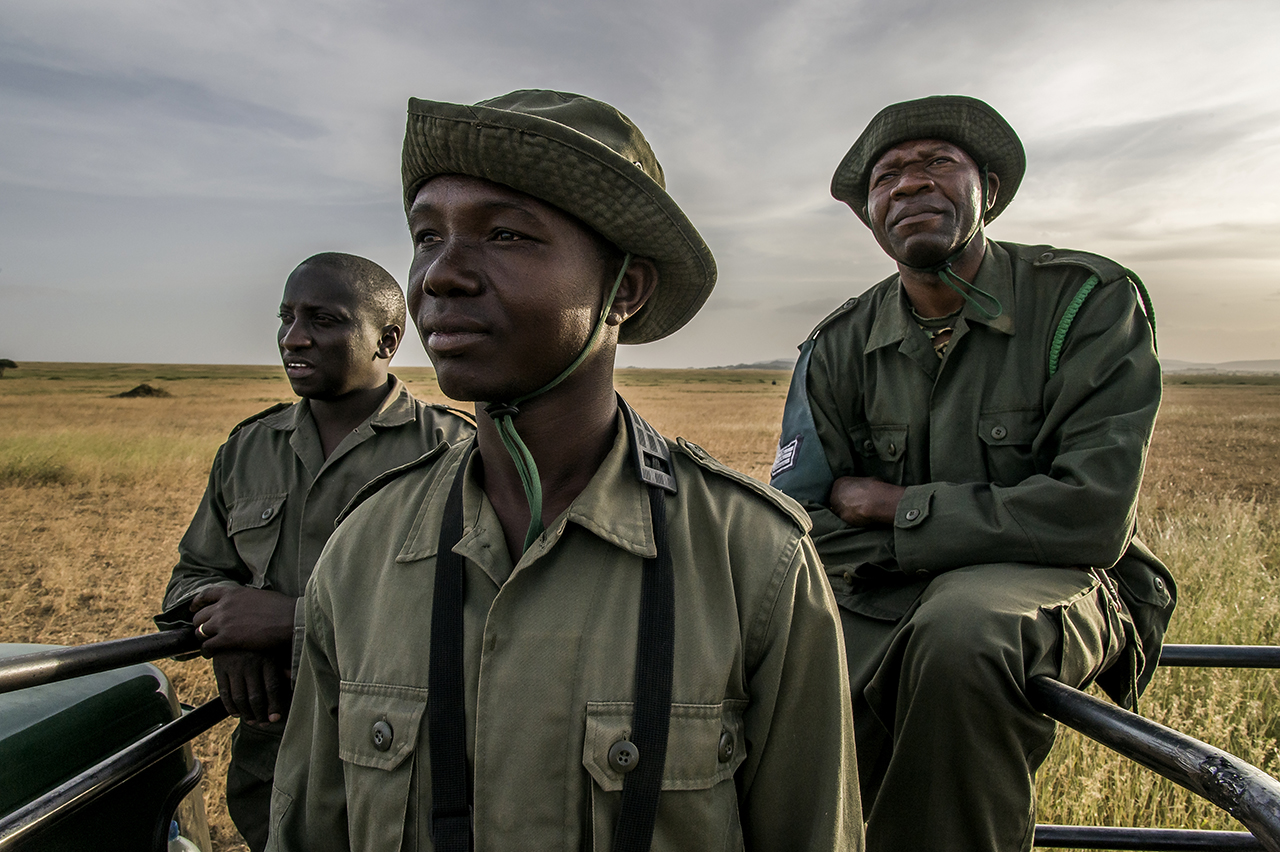
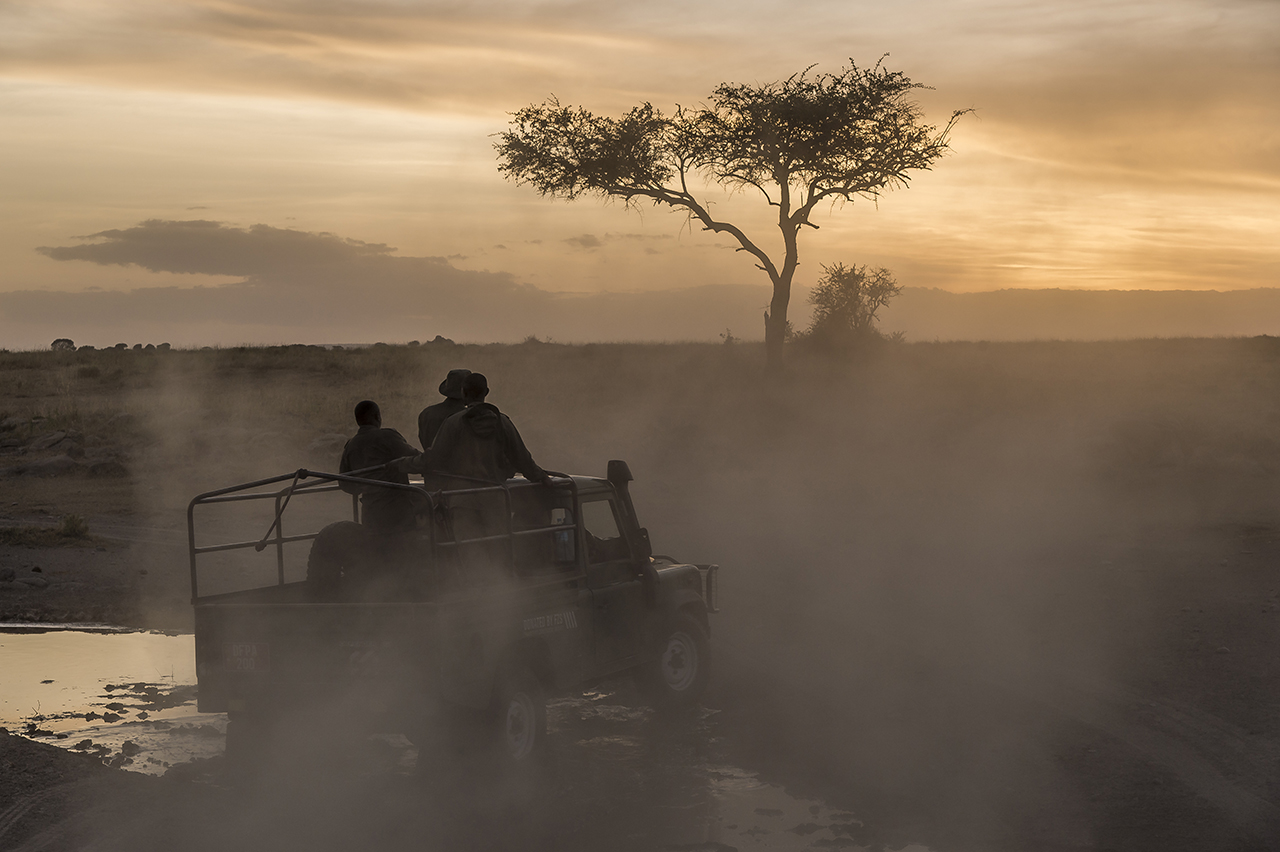
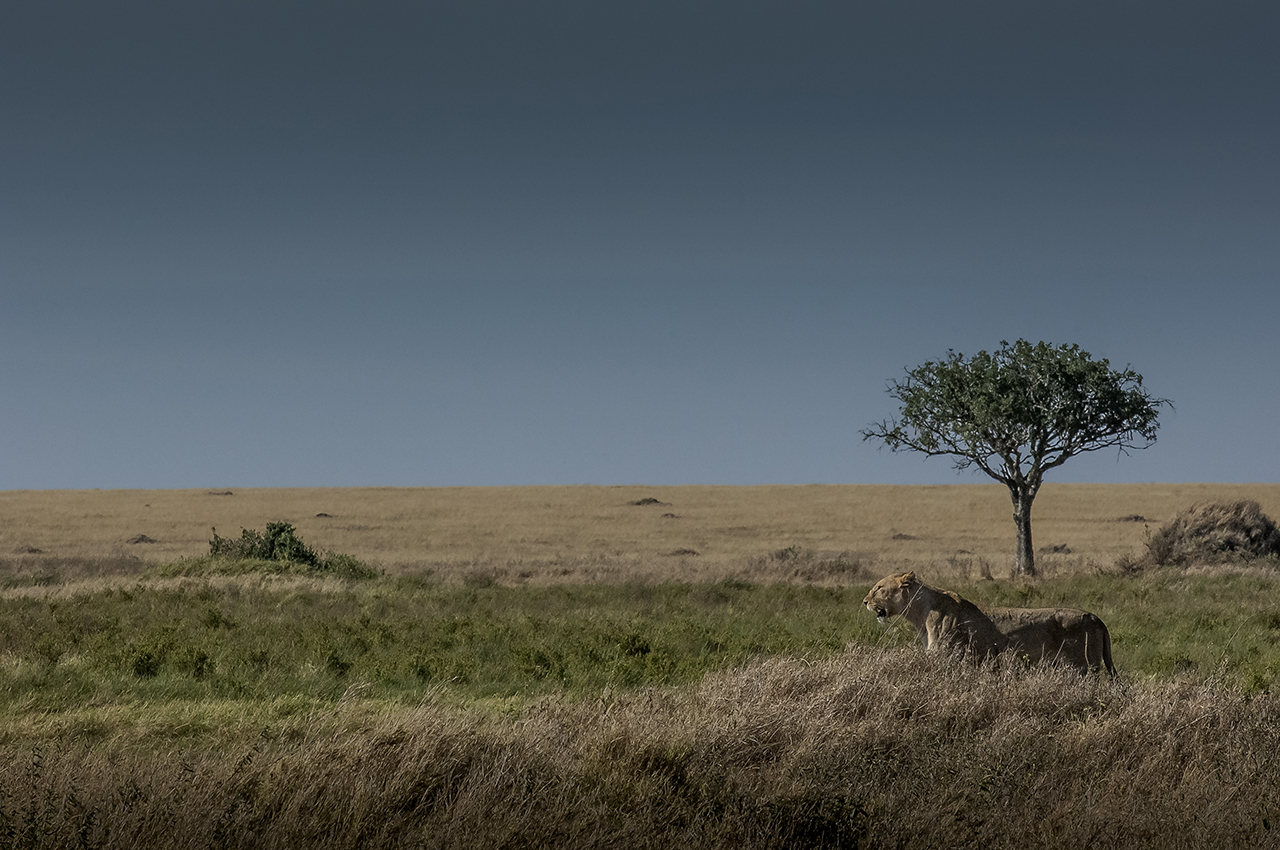
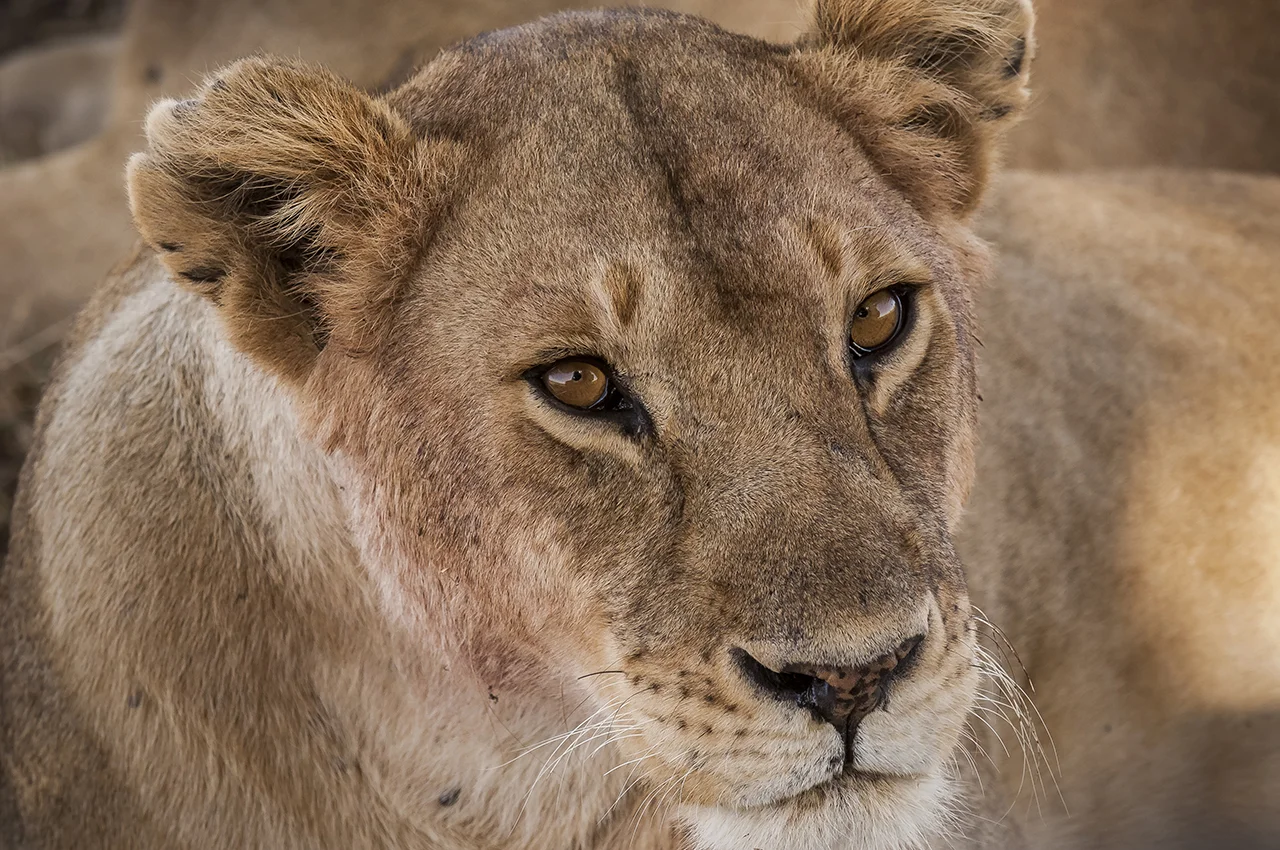
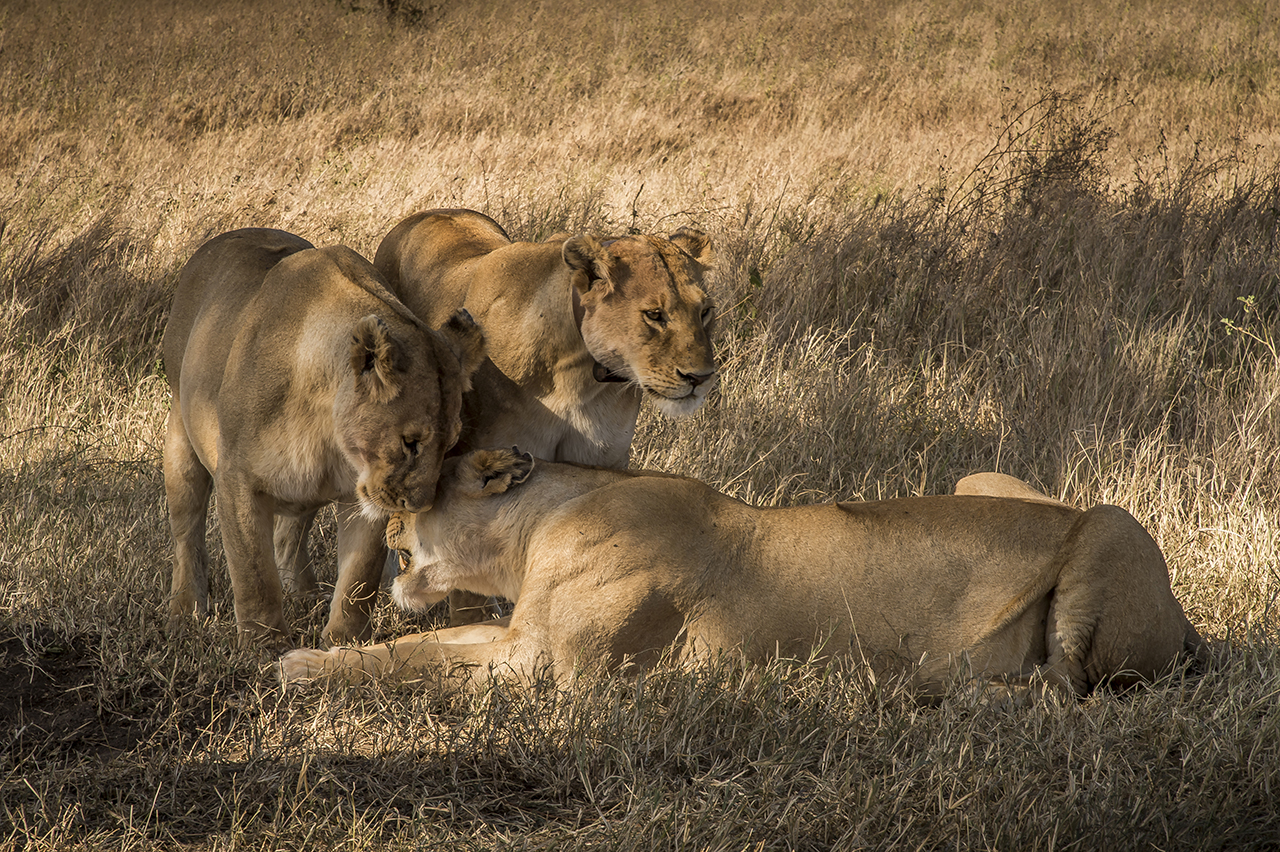
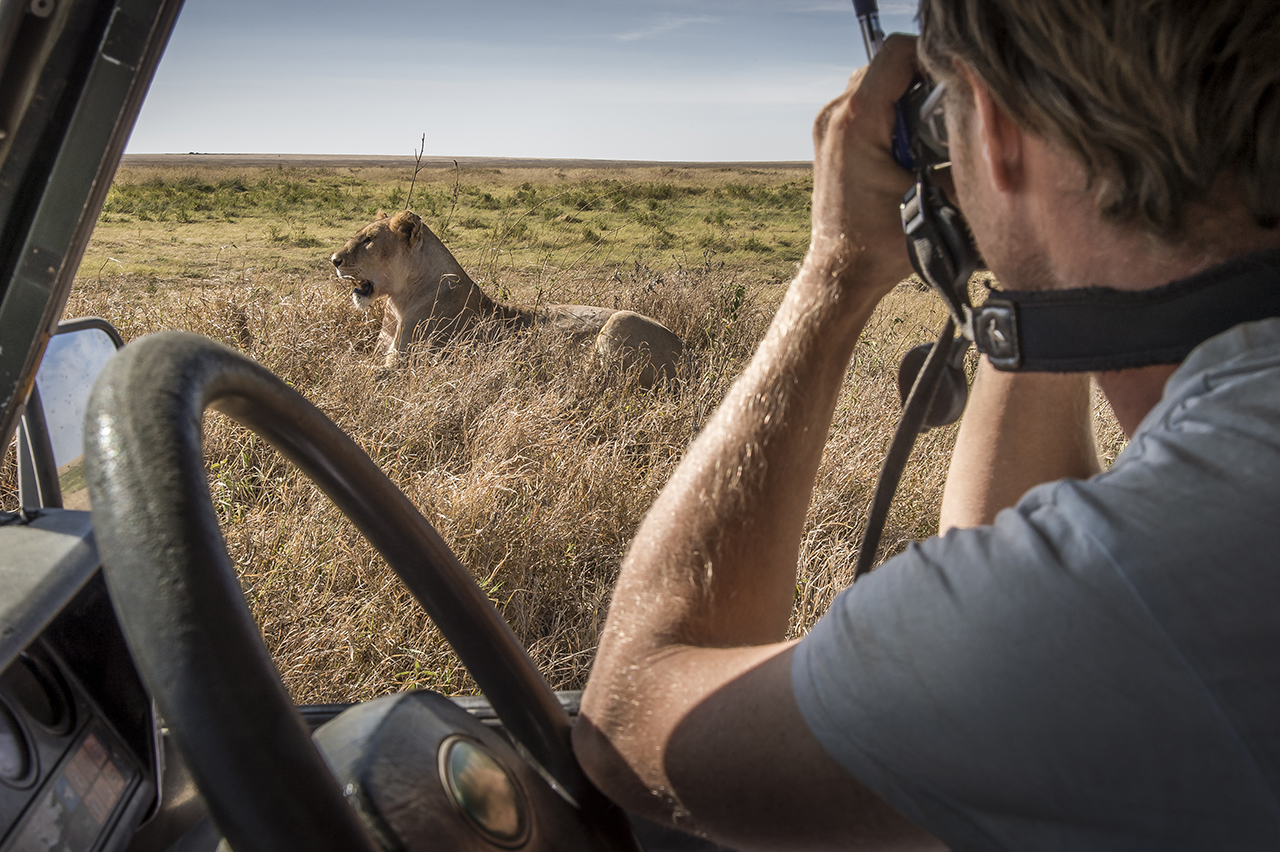
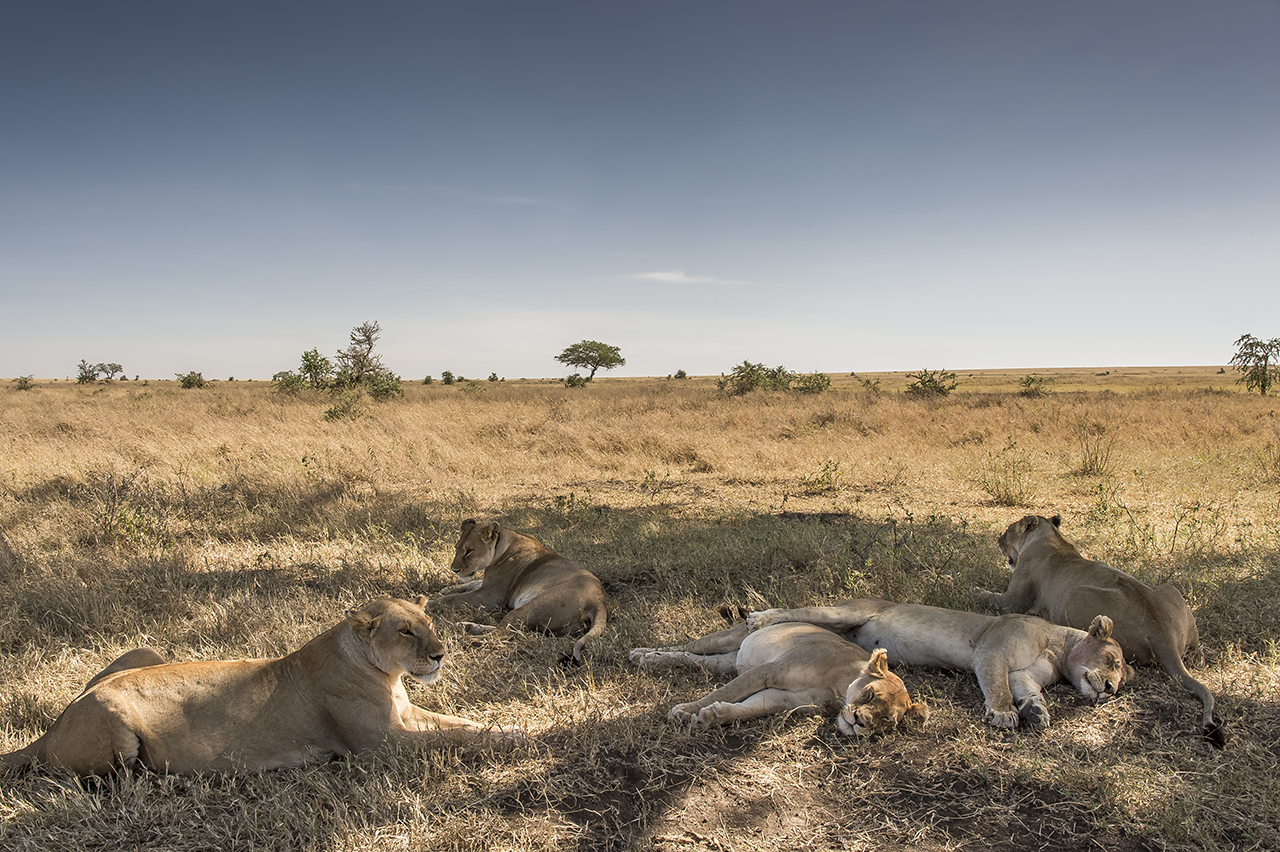
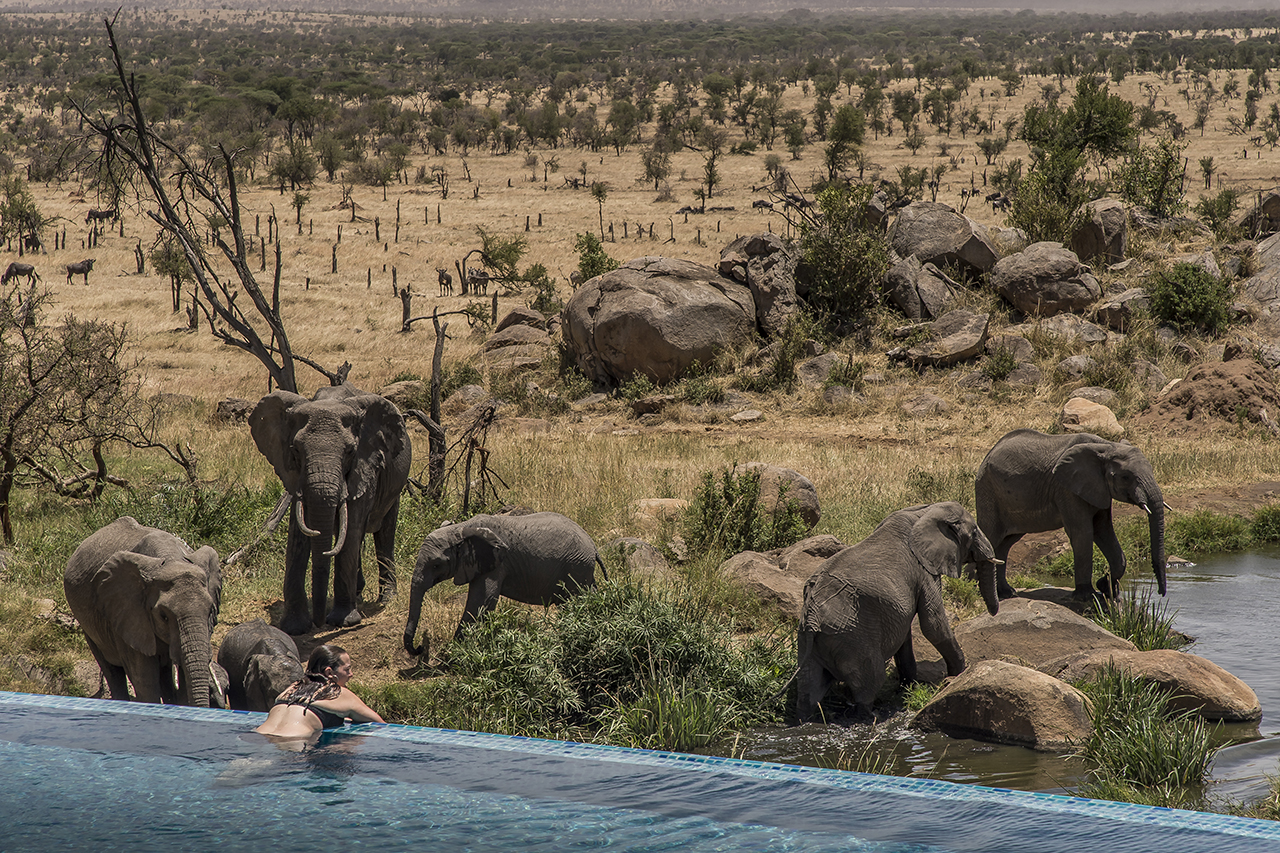
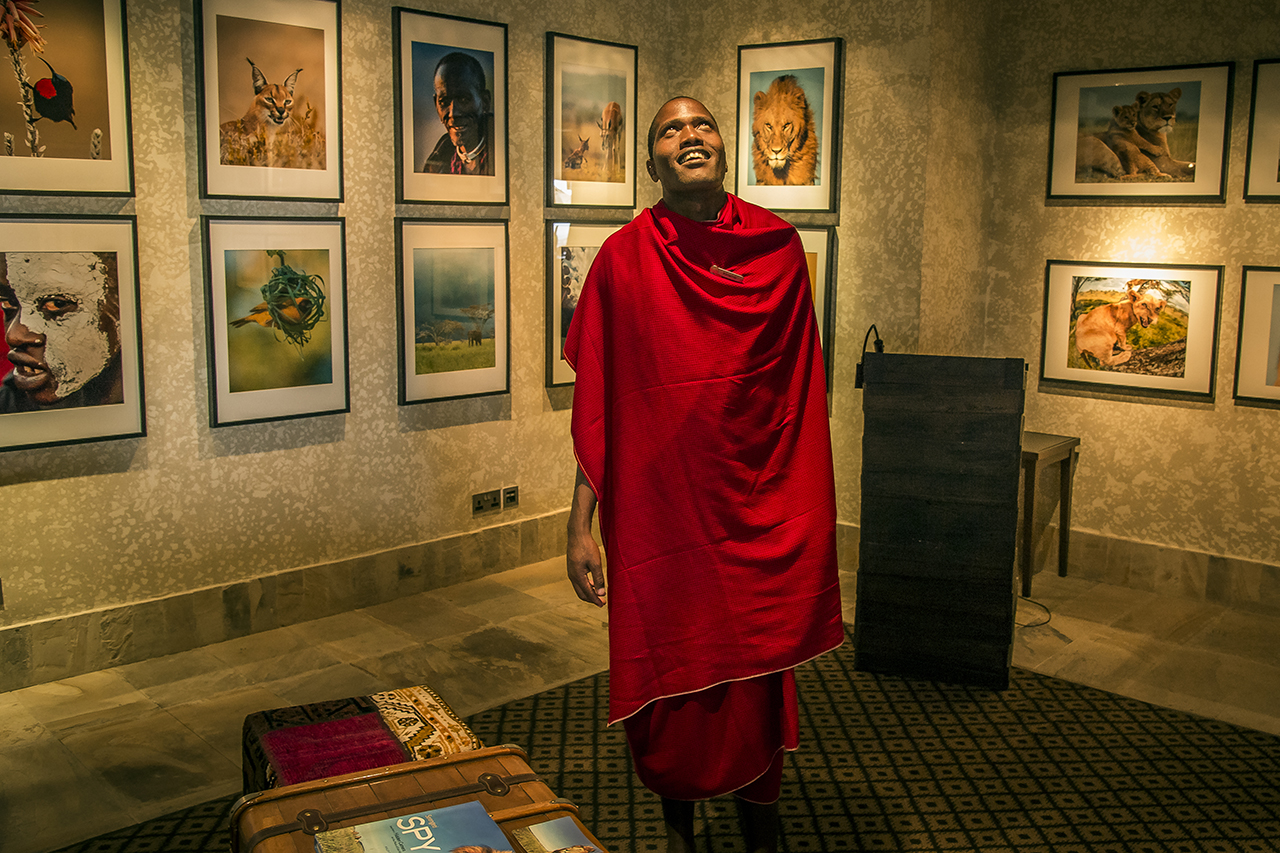
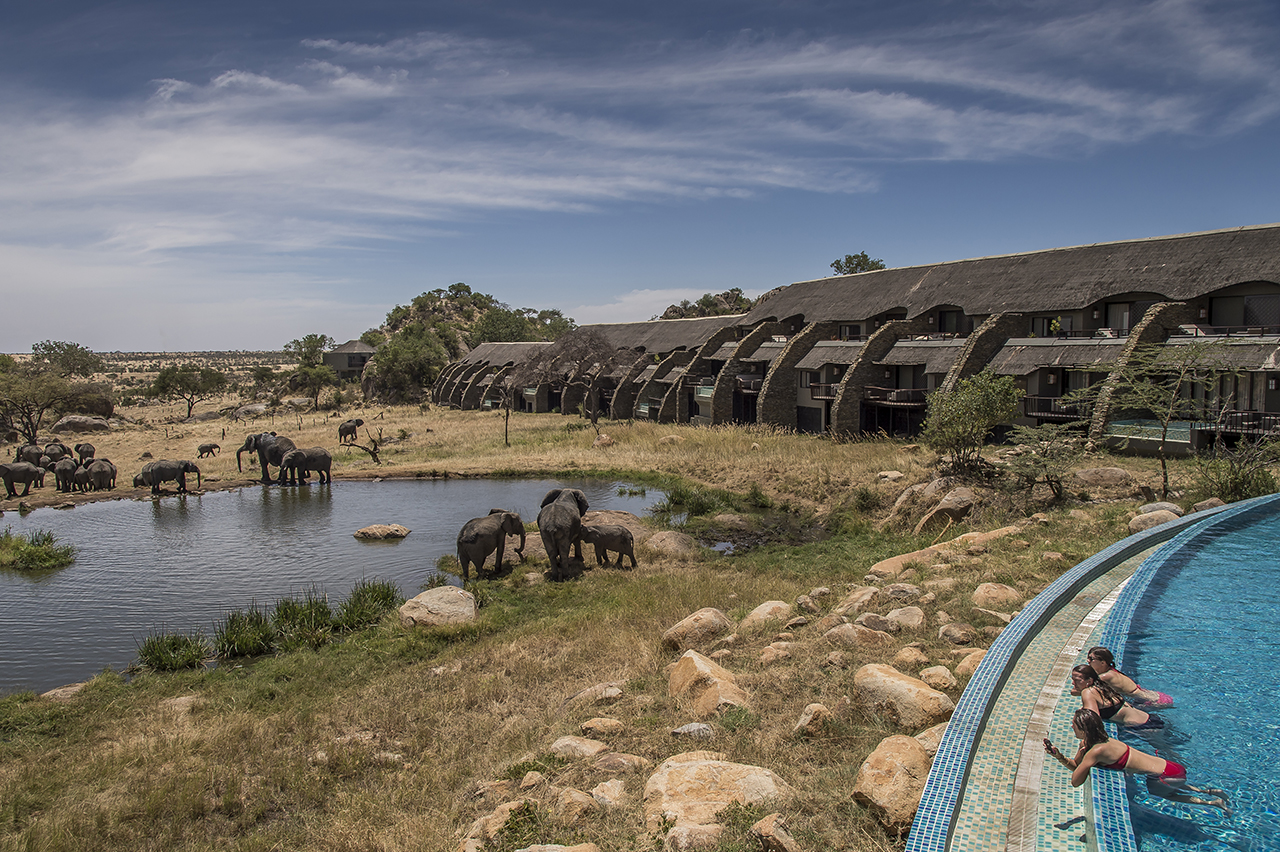
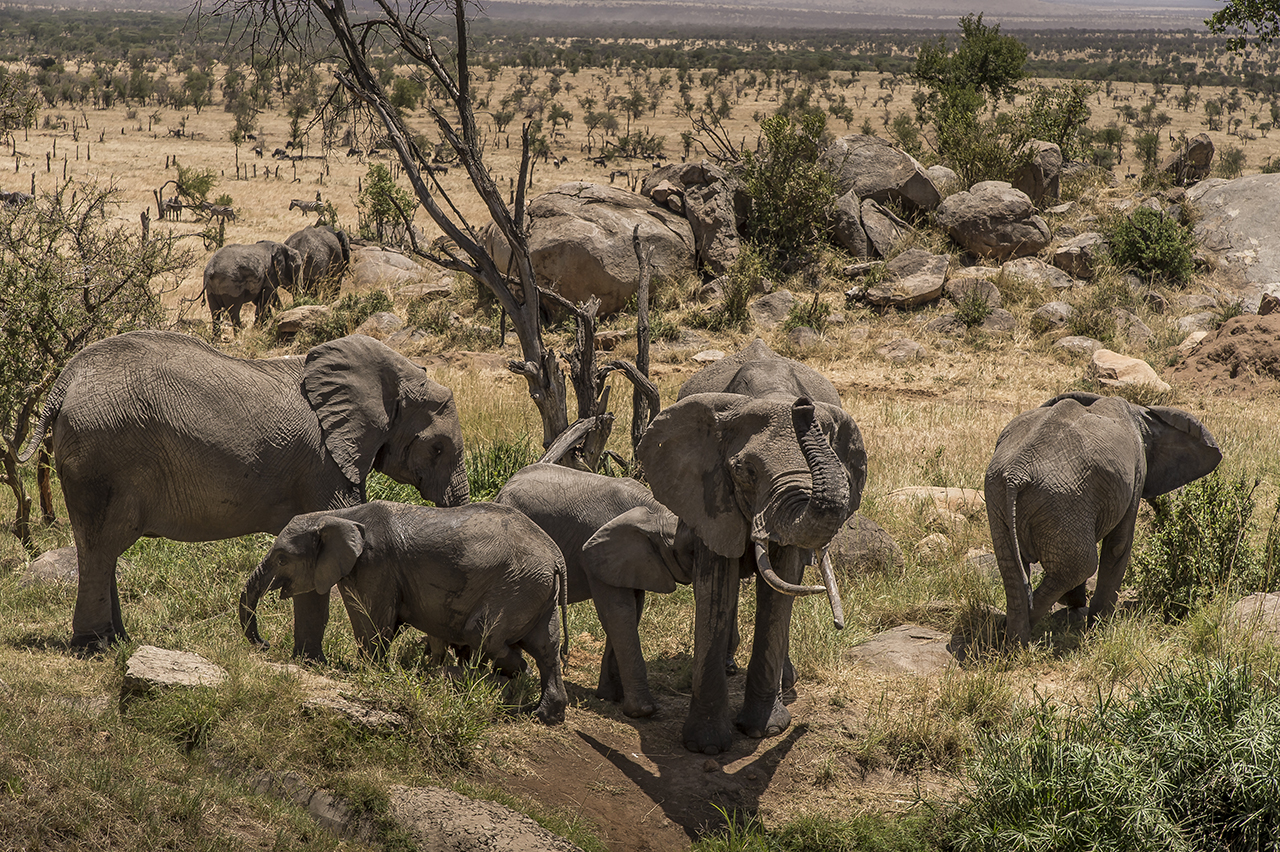
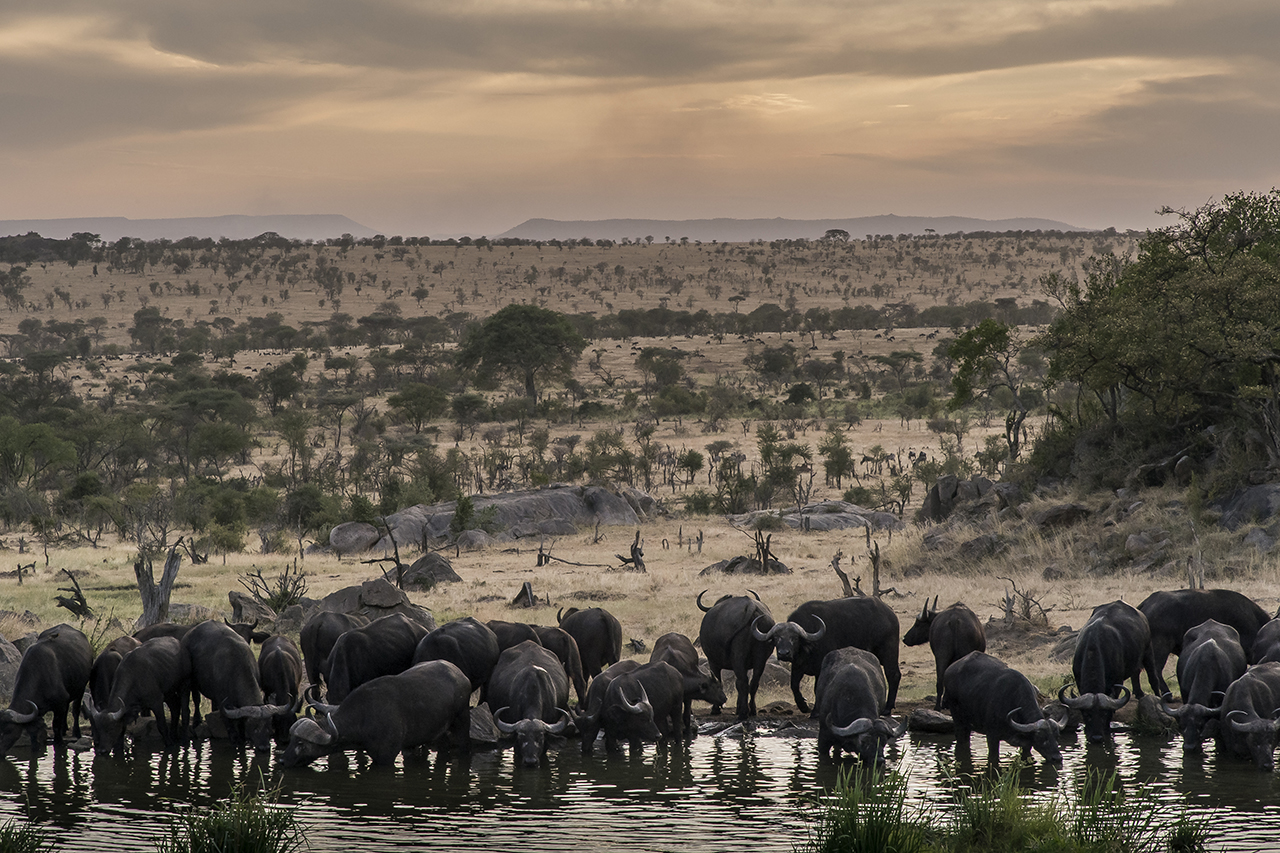
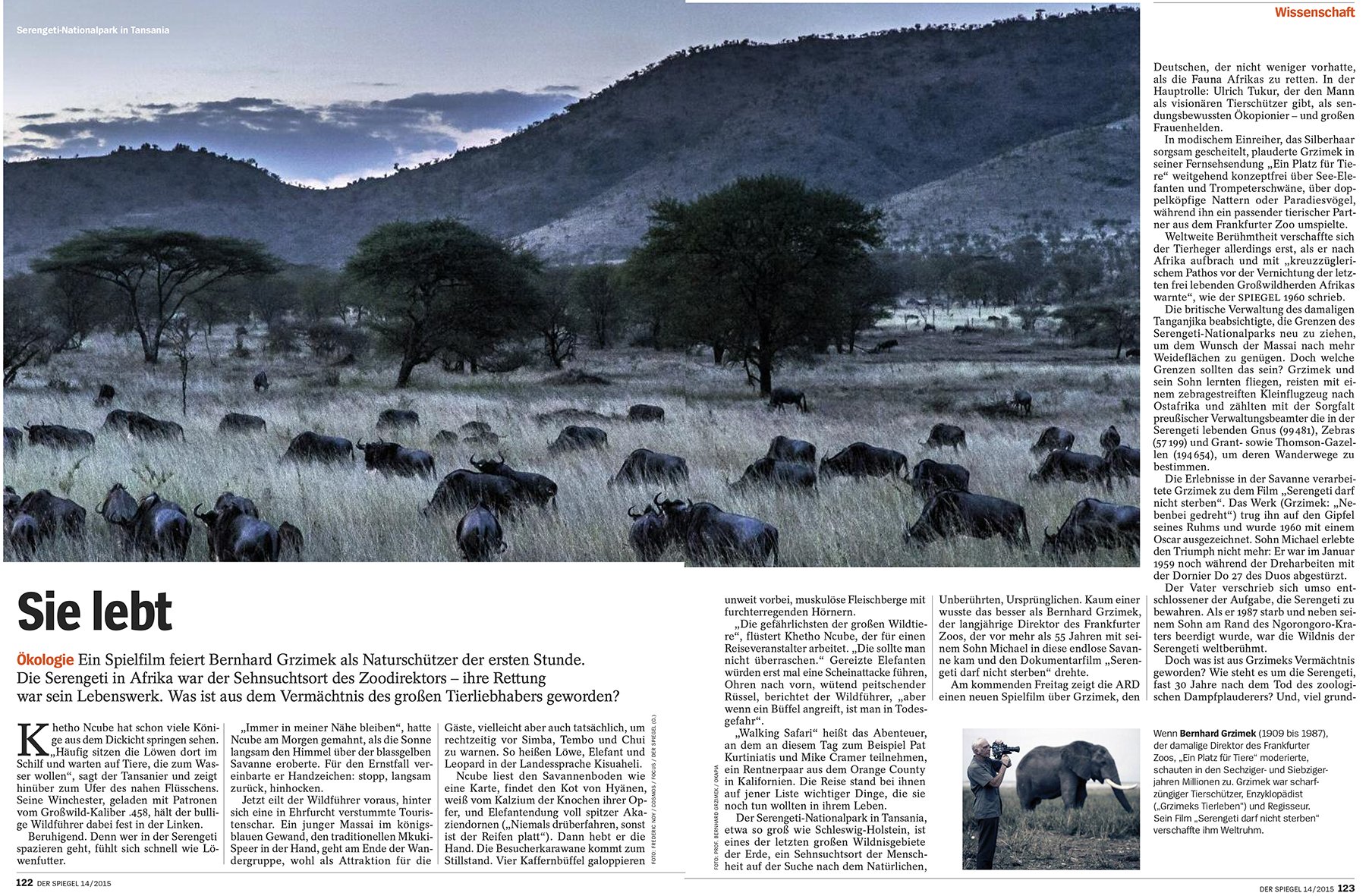
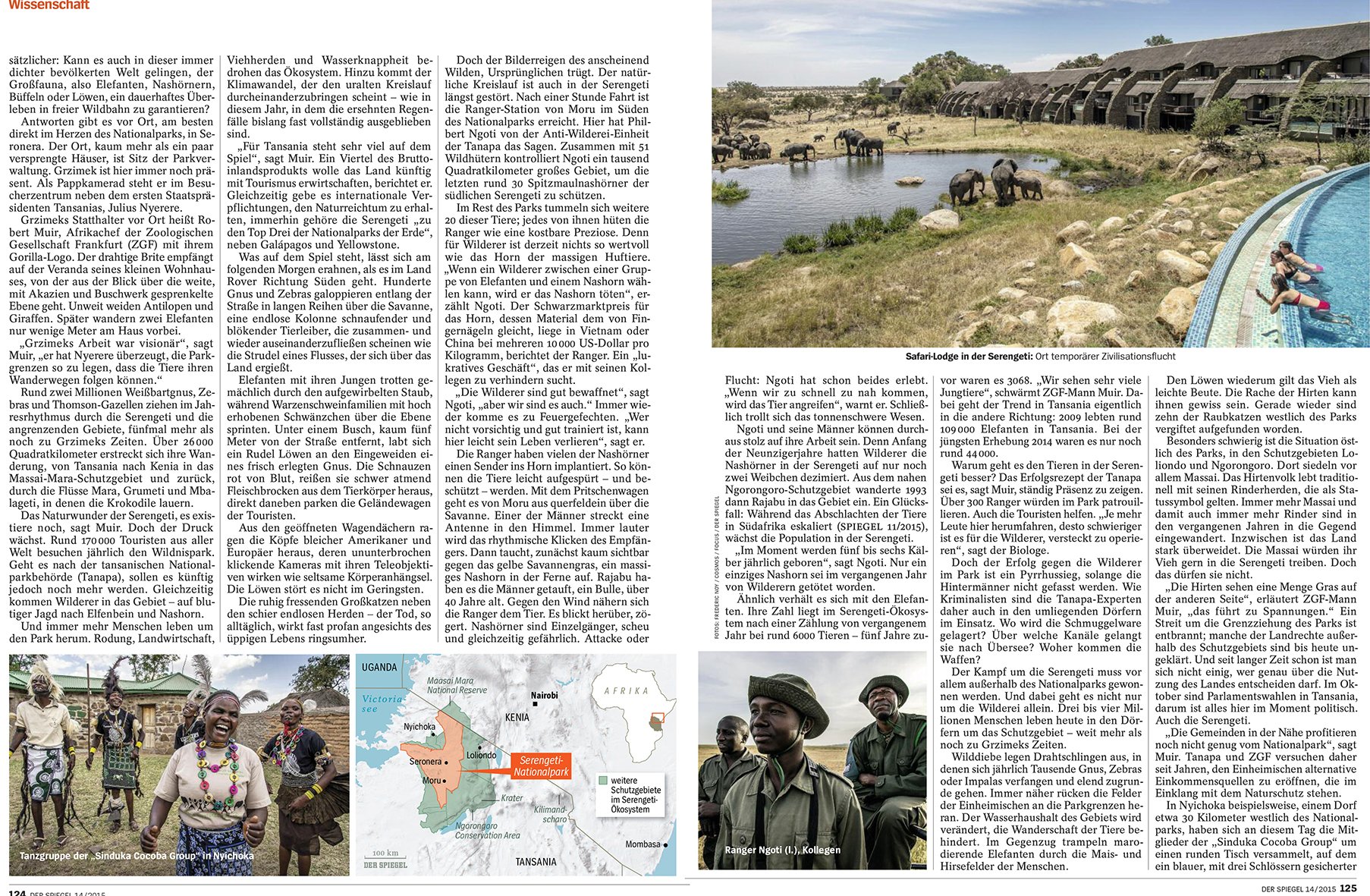

Early morning on Arusha airstrip, in northern Tanzania. A maintenance technician prepares a Cessna Grand Caravan, for its first morning flight to the airstrip of Seronera, an hamlet of few houses located in the heart of Seregenti National Parc, in Tanzania.

Early morning on Arusha airstrip, in northern Tanzania. A Cessna Grand Caravan belonging to a private company takes off with few tourists, for the airstrip of Seronera, an hamlet of few houses located in the heart of Seregenti National Parc, in Tanzania.

The Serengeti Plain where the Serengeti National Park is located. It is a large national park in northern Tanzania, in East Africa, covering 14,763 square kilometers. Second animal park in Africa, it is home to about four million animals. The five species of Big Five, lion, leopard, elephant, rhinoceros and African buffalo are present. It is one of the first three national parks on the planet, with the Galapagos and the Yellowstone.

The Serengeti Plain where the Serengeti National Park, located in northern Tanzania, in East Africa. Second animal park in Africa, it covers 14,763 square kilometers and is home to about four million animals. The five species of Big Five, lion, leopard, elephant, rhinoceros and African buffalo are present. It is one of the first three national parks on the planet, with the Galapagos and the Yellowstone.
In the Serengeti plain that borders the protected area of gorongoro, (South) the Masai are allowed to graze their herds. Serengeti means "endless plain" in Masai.

Unlike most other regions of Africa, the number of elephants in the Serengeti has increased again in recent years through a more effective fight against poaching. By 2014, the elephant population in Serengeti was estimated at 6,000 as against 3,068 five years earlier.
The trend elsewhere in Tanzania is opposite: in 2009, about 109,000 elephants lived in Tanzania, while a 2014 survey only numbers the population at about 44,000.
Why are the Serengeti figures better? Success seems to be due in part to the 300 rangers patrolling the park. The presence of tourists also help. "The more people who walk around here, the harder it is for poachers to hide," explained Robert Muir, then Director of the Africa Bureau of the Frankfurt Zoological Society in the Serengeti National Park (he changed work since).

A fleet of 4x4 designed to allow tourists to watch and photograph the animals stopped near a lioness who takes the morning sun next to a track in Seregenti Park. In 2012, the park was visited by approximately 170,000 tourists from around the world. Tourism contributes 17.5% of Tanzania's gross domestic product (in 2016) with estimates of up to 25% for the coming years. 11.0% of the national workforce (1,189,300 people) in 2013 was employed in the tourism sector.

The Serengeti Plain where the Serengeti National Park is located, in northern Tanzania, in East Africa. Second animal park in Africa, it covers 14,763 square kilometers and is home to about four million animals. The five species of Big Five, lion, leopard, elephant, rhinoceros and African buffalo are present. It is one of the first three national parks on the planet, with the Galapagos and the Yellowstone.
In the Serengeti plain that borders the protected area of gorongoro, (south) the Masai are allowed to graze their herds. Serengeti means "endless plain" in Masai.

The great migration of the wildebeests of the Serengeti is one of the largest animal migrations in the world, a unique phenomenon. Twice a year, about two million wildebeests, cross the Serengeti in Tanzania to find their food. They are followed by several hundred thousand zebras and Thomson antelopes. Between the end of January and the month of March, wildebeest herds are concentrated in the southeast of the park. In March-April, the wildebeests leave the great plains of the South to begin an endless walk through the national park, classified "world heritage" by Unesco. They return to their starting point 7 to 8 months later. Wildebeests seek the water they need and the green grass (young and tender) that is rich in protein and easier to digest.
Cattle herds and water scarcity threaten the ecosystem. In addition, climate change in the form of rain delay, seems to have changed the old cycle.

Elephants close to Asilia Camp.
Unlike most other regions of Africa, the number of elephants in the Serengeti has increased again in recent years through a more effective fight against poaching. By 2014, the elephant population in Serengeti was estimated at 6,000 against 3,068 five years earlier.
The trend elsewhere in Tanzania is reversed: in 2009, about 109,000 elephants lived in Tanzania, while a 2014 survey only numbers the population at about 44,000.
Why are the Serengeti figures better? Success seems to be due in part to the 300 rangers patrolling the park. The presence of tourists also help. "The more people who walk around here, the harder it is for poachers to hide," explained Robert Muir, then Director of the Africa Bureau of the Frankfurt Zoological Society in the Serengeti National Park (he changed work since).

Unlike most other regions of Africa, the number of elephants in the Serengeti has increased again in recent years through a more effective fight against poaching. By 2014, the elephant population in Serengeti was estimated at 6,000 as against 3,068 five years earlier.
The trend elsewhere in Tanzania is opposite: in 2009, about 109,000 elephants lived in Tanzania, while a 2014 survey only numbers the population at about 44,000.
Why are the Serengeti figures better? Success seems to be due in part to the 300 rangers patrolling the park. The presence of tourists also help. "The more people who walk around here, the harder it is for poachers to hide," explained Robert Muir, then Director of the Africa Bureau of the Frankfurt Zoological Society in the Serengeti National Park (he changed work since).

A young American bride jokes with a guide, in the 4x4 which brings them in late afternoon tour. She chose, along with her husband, the Serengeti, as a honeymoon destination.

A tourist enjoys beer, next to a campfire at Asilia Camp, the only tent camp located in the eastern prairies of the central part of the Serengeti, magnet for cheetahs and lion, out of the frequent passing paths of tourists , because out of the way. The permanent camp of 8 luxury tents is set up more than an hour from its nearest neighbor. Approximately 2,700 beds in approximately 120 safari camps are available throughout the park.

Passing under an acacia umbrella and in front of one of the luxury tents, employees of the Asilia Camp carry buckets of water to supply the guests' showers. Asilia Camp is the only tent camp located in the eastern prairies of the central part of the Serengeti, magnet for cheetahs and lion, out of the frequent passage of tourists, as off-center. The permanent camp of 8 luxury tents is set up more than an hour from its nearest neighbor. Approximately 2,700 beds in approximately 120 safari camps are available throughout the park.

At night, the guests / clients of the Asilia Camp dine in common, in the bush, around a long banquet table. Asilia Camp is the only tent camp located in the eastern prairies of the central part of the Serengeti, magnet for cheetahs and lion, out of the frequent passage of tourists, as off-center. The permanent camp of 8 luxury tents is set up more than an hour from its nearest neighbor. Approximately 2,700 beds in approximately 120 safari camps are available throughout the park.

Surrounded by an ocean of grass, Asilia Camp makes it possible to understand the Masai meaning of Serengeti: "endless plain". Asilia Camp is the only tent camp located in the eastern prairies of the central part of the Serengeti, magnet for cheetahs and lion, out of the frequent passage of tourists, as off-center. The permanent camp of 8 luxury tents is set up more than an hour from its nearest neighbor. Approximately 2,700 beds in approximately 120 safari camps are available throughout the park.

In the early morning in the eastern part of Serengeti Park. Blessed MPOFU saw many kings come out of thickets: "Lions often sit in the reeds and wait for the animals that come to drink," said the Tanzanian pointing to the bank of the nearby river. He firmly holds his winchester, loaded in .458 caliber cartridges. Reassuring for those who walk off in the Serengeti and who can quickly believe to be lion’s food. "Stay close to me," said Ncube, as the sun slid slowly over the pale yellow savanna. To communicate, a sign language dispenses only the indispensable orders: stop, slow down, crouch.

In the early morning in the eastern part of Serengeti Park. Blessed MPOFU leads a small group of tourists in walking ballads. "The lions often sit in the reeds and wait for the animals that come to drink," the Tanzanian said, pointing to the bank of the nearby river. He firmly holds his winchester, loaded in .458 caliber cartridges. Reassuring for those who accompany her walk into the Serengeti and who quickly can believe to be lion’s food. "Stay close to me," said Ncube, as the sun slid slowly over the pale yellow savanna. To communicate, a sign language dispenses only the indispensable orders: stop, slow down, crouch. In the back of the queue, a Masai, as much for the folklore as for its propensity to discern with an impressive acuity the animals to medium and long distance.

In the early morning in the eastern part of Serengeti Park. A young Masai warrior indicates the presence of a buffalo at Blessed MPOFU (2nd Left), a guide who leads a tourist group on a walking tour. A Masai, accompanies each walk as much for the folklore as for their propensity to discern with an impressive acuity the animals to medium and long distance.

Early morning in the eastern part of Serengeti Park. A young Masai warrior takes a break while accompanying the walking tour of a group of tourists in the Serengeti. Their presence is less due to folklore than their propensity to discern with an impressive acuity the animals at medium and long distance. The cohabitation between lions and Masai has proved delicate. The situation is particularly difficult in the eastern part of the park, in the protected areas of Louldo and Ngorongoro, where Masai communities have settled. Shepherds traditionally live with their herds of cattle, which they regard as a symbol of life and prosperity. More and more Masai and thus more and more cattle have migrated to the area in recent years, involving a strong overgrazing. The Masai would like to drive their cattle in the Serengeti, but can not ...

A group of young spotted hyenas lazing at the end of the day in the Seregenti. The Spotted Hyena is the most numerous large predator in the Serengeti Ecosystem and throughout sub-Saharan Africa. There are more than 500 hyenas belonging to 12 Serengeti clans. Individuals can be recognized by their unique spot patterns, scars, and natural ear notches. The current population of spotted hyenas is estimated, in the entire Serengeti Ecosystem at approximately 7,700 animals. This averages to 0.4 hyenas per square kilometer. Actual density varies both spatially and temporally. Clans occupying the plains contain more members than clans in the woodlands. However, hyenas from both these habitats "commute" to the migratory herds of wildebeest and zebra when prey within their own territory is scarce.
A hyena may live up to 20 years in the wild. However life is full of dangers; in particular lions ensure that few hyenas reach old age.

A field assistant observes a group of hyena and try to identify them thanks to identification sheets and photos collected day after day for years. A group of young spotted hyenas lazing at the end of the day in the Seregenti. The Spotted Hyena is the most numerous large predator in the Serengeti Ecosystem and throughout sub-Saharan Africa. There are more than 500 hyenas belonging to 12 Serengeti clans. Individuals can be recognized by their unique spot patterns, scars, and natural ear notches. The current population of spotted hyenas is estimated, in the entire Serengeti Ecosystem at approximately 7,700 animals. This averages to 0.4 hyenas per square kilometer. Actual density varies both spatially and temporally. Clans occupying the plains contain more members than clans in the woodlands. However, hyenas from both these habitats "commute" to the migratory herds of wildebeest and zebra when prey within their own territory is scarce.
A hyena may live up to 20 years in the wild. However life is full of dangers; in particular lions ensure that few hyenas reach old age.

Village of Nyichoka, about 30 kilometers west of the Serengeti, the members of the group "Sinduka Cocoba" gather around a table on which is placed a blue metal box closed by three padlocks After an immutable ritual, the box is unlocked. Four plastic boxes filled with banknotes are stored there. They contain the total assets of the local "Conservation Bank of Nature". Each member pays "shares" of 4,000 Tanzanian shillings (about two euros).
Members meet every Saturday around this micro-credit project. Debts are then repaid and disbursements made. Members invest in projects that guarantee their livelihood. The only condition of the loan: that nature is not affected by the funded project.

From hunter to beekeeper, Maro Marongoli now produces honey a few kilometers from Serengeti and sells it to hotels in the region. As a member of the "Sinduka Cocoba" group, he was able to start his activity and financed the purchase of the hives, thanks to a loan granted by the group's micro-credit project.
"We were hunters," explains Marongoli, "now we take advantage of the tourists who arrive in our stores." Traditionally, its tribe, the Ikoma, is a hunting people. In order to support the conservation of nature, it has modified its main and traditional activity.

From hunter to beekeeper, Maro Marongoli now produces honey a few kilometers from Serengeti and sells it to hotels in the region. As a member of the "Sinduka Cocoba" group, he was able to start his activity and financed the purchase of the hives, thanks to a loan granted by the group's micro-credit project.
"We were hunters," explains Marongoli, "now we take advantage of the tourists who arrive in our stores." Traditionally, its tribe, the Ikoma, is a hunting people. In order to support the conservation of nature, it has modified its main and traditional activity.

Members of the group "Sinduka Cocoba" interprets the "Singori" a welcoming song in the village Nyichoka, about 30 kilometers West of the Serengeti. The object of "Sinduka Cocoba" is microcredit in order to allow its members to invest in projects that ensure their subsistence. The only condition: that nature is not affected by the project.
The capital, held in a metal safe in the home of one of them, consists of "shares" of 4,000 Tanzanian shillings (about two euros) purchased by the members. The members of the bank meet each Saturday. Debts are then repaid and disbursements made.
Agnes Marongoli (right) with her husband Maro, built a small cultural center with loans. Tourists come to buy handicrafts and listen to the ancient animal myths of the Ikoma tribe.

A member of the group "Sinduka Cocoba" in the village Nyichoka, about 30 kilometers west of the Serengeti. The object of "Sinduka Cocoba" is microcredit in order to allow its members to invest in projects that ensure their subsistence. The only condition: that nature is not affected by the project.
The capital, held in a metal safe in the home of one of them, consists of "shares" of 4,000 Tanzanian shillings (about two euros) purchased by the members. The members of the bank meet each Saturday. Debts are then repaid and disbursements made.

A shepherd leads his herd to pasture near the Serengeti. Although in Tanzania grazing is prohibited in national parks and other protected areas, in recent years, livestock keepers are increasingly driving livestock on reserves. The Serengeti National Park is not immune to pressure from pastoralists that threatens the viability of tourism.
Park Chief Warden William Mwakilema recently said, "As a Conservative, I am very concerned about the current trend. The situation is bad because now citizens come with their livestock to the park for grazing and carry out agricultural activities in the park. If this situation continues in the coming years, it will threaten the existence of the Serengeti National Park. This UNESCO World Heritage site is likely to become a history of the past in 20 to 25 years if there are no practical measures. "
The population has rapidly increased at the periphery of the park as a corollary to the increase in the Tanzanian population: 8,000,000 in 1961, 50,000,000 in 2015. At this rate, the number could double in 20 years.

Along a ford of a river crossing the Serengeti Park, a herd of hippopotamuses bask in the water at nightfall. Herbivores, these animals graze at night in the bush. They are about to get out of the water in search of food.

Night falls on the Serengeti National Park. A herd of wildebeest is grazing on. It is the period of the year when they gather together in increasingly large herds, a premise for the great migration, one of the last mass migrations of large ungulates on earth.
In general, wildebeests follow an eternal cycle: In February, they bring their calves into the grassy plains around Lake Ndutu in the south of the Serengeti and then slowly move northward on the Masai Mara, a plain of southern Kenya, in search of greener pastures and water. At the end of the year, with the beginning of the rainy season in Tanzania, they return. The fluctuating timing of the rainy season and dry periods, linked to climate change, changes the moment of migration by several weeks. So it may happen that tourists, even in high season do not see the animals ...

TANAPA (Tanzania National Parks) rangers' guard station in Moru, southern Seregenti. Ngoti, chief of rangers on standby in the radio room. 52 rangers control an area of ,000 square kilometers to protect the last 30 black rhinoceros in the south of the Serengeti. The rest of the park is home to 20 other animals. Each of them is a treasure, for to the poachers nothing is as precious as their horn. "If a poacher can choose between killing a group of elephants or a rhinoceros, he will kill the rhino," Ngoti said. "The price on the black market for the horn, the material of which is similar to that of the nails, is in Vietnam or China at more than $ 10,000 per kilo".
Ngoti and his men can be proud of their work. By the early 1990s, poachers had reduced the Serengeti's rhinoceros population to only two females, until the moment when, from the nearby protected area of gorongoro, Rajabou, a male, migrated. A stroke of luck. Thus, while slaughtering animals in South Africa results in degeneration, the Serengeti population is growing. Currently, five to six pups are born each year.

A ranger of the TANAPA anti-poaching unit (Tanzania National Parks) in the Moru region of southern Seregenti is trying to locate a rhinoceros. Standing in the back of the pickup from Moru's headquarters, he brandished an antenna to pick up a radio signal. Rangers implanted a transmitter in the horn of several rhinoceros including that of Rajabu, a massive male rhinoceros over 40 years old, which migrated to the area in 1993 and allowed to repopulate the area. Thanks to the transmitters, the animals are more easily detected and protected.
Rangers can be proud of their work. By the early 1990s, poachers had reduced the Serengeti's rhinoceros population to only two females, until the moment when, from the nearby protected area of gorongoro, Rajabou, a male, migrated. A stroke of luck. Thus, while slaughtering animals in South Africa results in degeneration, the Serengeti population is growing. Currently, five to six pups are born each year.

Rajabu, a massive male rhinoceros over 40 years old, has made it possible to repopulate the area. Indeed, in the early 1990s poachers reduced the black rhino population of the Serengeti to two females, until the moment when, from the nearby protected area of gorongoro, Rajabou migrated to the area in 1993. A stroke of luck. Thus, while slaughtering animals in South Africa results in degeneration, the Serengeti population is growing. Currently, five to six pups are born each year. Today, they are around fifty. The park's ecosystem certainly has room for several thousand of them. A hundred years ago, there were more rhinoceros than elephants. The situation of the rhinoceros is worse than that of the elephants at present There are about 5,000 blacks in Africa and about 20,000 whites.
A transmitter is implanted in the horn of Rajabu to allow rangers to locate and monitor it. The rhinoceros are solitary, timid and at the same time dangerous. If one gets too close to them they can charge.

A group of rangers of the TANAPA anti-poaching unit (Tanzania National Parks) in the Moru region in southern Seregenti, remotely monitors a rhinoceros standing at the back of their pickup from Moru headquarters. 52 rangers control an area of ,000 square kilometers to protect the last 30 black rhinoceros in the south of the Serengeti. The rest of the park is home to 20 other animals. Each of them is a treasure, for to the poachers nothing is as precious as their horn. "If a poacher can choose between killing a group of elephants or a rhinoceros, he will kill the rhino," Ngoti said. "The price on the black market for the horn, the material of which is similar to that of the nails, is in Vietnam or China at more than $ 10,000 per kilo".
His men can be proud of their work. By the early 1990s, poachers had reduced the Serengeti's rhinoceros population to only two females, until the moment when, from the nearby protected area of gorongoro, Rajabou, a male migrated to the area in 1993. A stroke of luck. Thus, while slaughtering animals in South Africa results in degeneration, the Serengeti population is growing. Currently, five to six pups are born each year.

Rangers of the TANAPA anti-poaching unit (Tanzania National Parks) in the Moru region of southern Seregenti are patrolling from their Moru headquarters. 52 rangers control an area of ,000 square kilometers to protect the last 30 black rhinoceros in the south of the Serengeti. The rest of the park is home to 20 other animals. Each of them is a treasure, as to the poachers nothing is as precious as their horn. "If a poacher can choose between killing a group of elephants or a rhinoceros, he will kill the rhino," Ngoti said. "The price on the black market for the horn, the material of which is similar to that of the nails, is in Vietnam or China at more than $ 10,000 per kilo".
His men can be proud of their work. By the early 1990s, poachers had reduced the Serengeti's rhinoceros population to only two females, until the moment when, from the nearby protected area of gorongoro, Rajabou, a male migrated to the area in 1993. A stroke of luck. Thus, while slaughtering animals in South Africa results in degeneration, the Serengeti population is growing. Currently, five to six pups are born each year.

A lioness has just spotted a family of warthogs at some distances, in the plain of the Serengeti. With about 3,000 animals, the Tanzanian National Park is home to one of the largest populations of African lions.

A lioness in the Serengeti plain. With about 3,000 animals, the Tanzanian National Park is home to one of the largest populations of African lions.

A group of lionesses is lounging in the plain of the Serengeti. With about 3,000 animals, the Tanzanian National Park is home to one of the largest populations of African lions.

A field assistant working for a research project about lions in the Serengeti, tries to identify a femelle by watching her with binoculars.

A group of lionesses is losing back in the plain of the Serengeti. With about 3,000 animals, the Tanzanian National Park is home to one of the largest populations of African lions.

Four Seasons Safari Lodge of Serengeti, a luxurious resort, north of Seronera. The large terrace with its lounges, ends with a swimming pool. Below the basin and just a dozen meters away is an artificial water source fed by the water filtered by the hotel, allowing a direct view of the zebras, elephants and wildebeests.

A Masai employee, in a lounge area of he Serengeti Four Seasons Safari Lodge, a luxurious resort north of Seronera.

Four Seasons Safari Lodge of Serengeti, a luxurious resort, north of Seronera. The large terrace with its lounges, ends with a swimming pool. Below the basin and just a dozen meters away is an artificial water source fed by the water filtered by the hotel, allowing a direct view of the zebras, elephants and wildebeests.

Unlike most other regions of Africa, the number of elephants in the Serengeti has increased again in recent years through a more effective fight against poaching. By 2014, the elephant population in Serengeti was estimated at 6,000 as against 3,068 five years earlier.
The trend elsewhere in Tanzania is the other way round: in 2009, about 109,000 elephants lived in Tanzania, while a 2014 survey only numbers the population at about 44,000.
Why are the Serengeti figures better? Success seems to be due in part to the 300 rangers patrolling the park. The presence of tourists also help. "The more people who walk around here, the harder it is for poachers to hide," explained Robert Muir, then Director of the Africa Bureau of the Frankfurt Zoological Society in the Serengeti National Park (he changed work since).

A herd of buffaloes drink at a watering point in Serengeti Park at sunset. Buffalos belong to the Big Five, the most sought-after animals by hunters in the last century and the most sought after by tourists. "The most dangerous of big game," admitted a guide. While an angry elephant simulates a charge, flaps his ears and furiously flagellates his trunk as a warning, a buffalo attack is sudden and a real danger of death.